Michael G. Frodl, Esq. & C-LEVEL Maritime Risks
Intel collection, analysis, early trends recognition & forecasting
WASHINGTON, D.C.
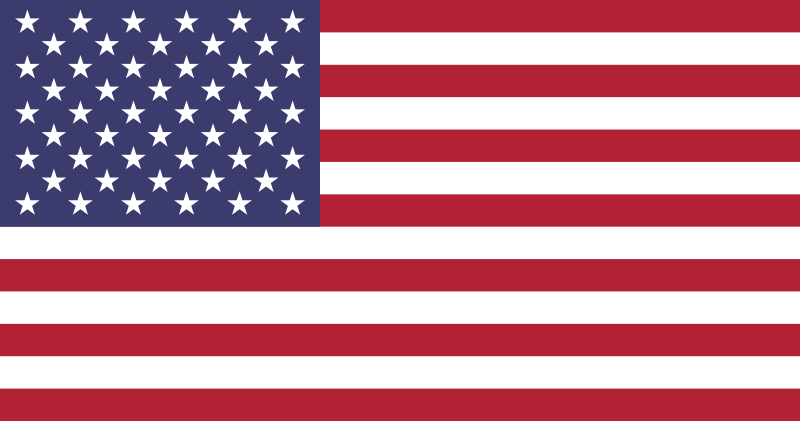
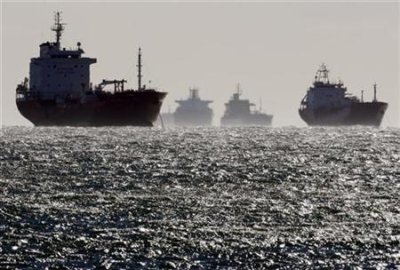
SPEECHES, COLUMNS, INTERVIEWS & QUOTES
EXECUTIVE SUMMARY
C-LEVEL Maritime Risks is an emerging risks consultancy, founded and headed by Michael G. Frodl, Esq., a Washington, DC-based attorney who has served as an emerging risks adviser to members of the national security community in the Nation's Capital, as well as to underwriters in Bermuda and then London for many years now.
Since the 1990s, Michael has advised on numerous emerging risks: first environmental energy, and climate change risks, then cyber, anarchist / anti-globalist, and terrorist risks (including WMD terrorism), and mostly now modern maritime piracy, terrorism and supply chain risks.
Starting in late 2008, after the hijacking by Somali pirates of a Saudi supertanker headed to New Orleans with 2 million barrels of crude oil, Michael began advising and interfacing between the national security community in Washington and the underwriting communities first in Bermuda and then in London. He helped the communities not only acquire an early understanding of the nature of modern piracy as was being conducted off the Horn of Africa by Somalis, and where it was likely headed, but also, through his liaison work / risk diplomacy, he helped each learn what the other was able and willing to do so as to respond to the threat.
This Website describes how Michael's advisory work on modern maritime piracy become much more steady if not permanent in the course of 2009. He'd bring together a team of former government, military, and intel analysts, as well as Wall Street financiers and London underwriting advisers who'd help him refine his insights into modern maritime piracy.
By late 2009 Michael and his team became sufficiently concerned about the Somali threat to tankers laden with Persian Gulf oil headed not to the US but to East Asia such that he warned that pirates would soon be attracted to the sea lanes just west of India. By end of 2010 it would be recognized as fact, with even Lloyd's of London's Joint War Committee extending the high risk area out all the way to 78 degrees East of Greenwich (to include the southern tip of India).
In mid 2010 Michael began traveling to Asia and not only warned maritime interests there of what he was seeing developing in the Indian Ocean, but also learned much from his discussions (DC and London know much, granted, but so do the senior people in Asia, where not by coincidence the merchant marine industry's center of gravity is today). Michael now stays in close touch with key maritime stakeholders in Asia and advises clients across the region.
Given the work Michael did to help first Washington, Bermuda and London, and now Shanghai, Hong Kong and Singapore, not just understand Somali piracy but also forecast its developments, in early 2012 his clients asked him to do the same with Nigerian piracy and SE Asian piracy. They also asked him to do the same with threats to strategic sea lanes through choke points such as the Straits of Hormuz and of Malacca and the Suez Canal, as well as even do the same with potential threats to navigation and commerce in the South China and now East China Seas.
This Website traces history linearly, so the reader will first learn about the modern maritime piracy work Michael and his team first did - this appears in the narrative immediately below.
For the continuation of the story, where Michael and his team expand to choke points and other threats to strategic sea lanes, the reader needs to hop over to the picture gallery / tutorial in the second half of the website, after the narrative and before the list of speeches and press articles. Each picture contains a caption that pops up when the reader rests their computer's cursor over the image, allowing the reader to follow the development of C-LEVEL Maritime Risks as it expanded its repertoire.
This Website is regularly updated, so we invite the reader to check back to learn about our latest work as well as comments to the public.
FYI / FAQ: Our name, "C-LEVEL Maritime Risks", was carefully chosen and involves a word game / double entendre.
On the one hand, "C-LEVEL", as written, refers to the corporate officer level / senior most decision maker - who is the leading target of our unique form of support.
While on the other hand, "C-Level", as heard, evokes - at least in a maritime context - the concept of "sea-level".
That's no accident.
This is because we mean to provide a level of analysis and overview that suits senior decision makers operating well above the action, while also providing them the detailed view at the wave tops.
As in, where "C-Level" meets "sea level".
Giving top decision makers the view from the heights as well as the from the trenches is in today's increasingly complicated as well as increasingly hierarchical world vital.
In military strategy something similar exists and has been called "Fingerspitzgefuehl": a German word that means "feeling from the finger tips". Some call it intuition but it really means having the "touch" for your battlefield. Many great military leaders since Caesar have posessed this rare faculty - Napoleon in his own campaigns sought out the very same battlefields that Julius Caesar had chosen after personally locating and walking through geography that would favor his strategies.
It's hard to convey the concept as we invoke it in the maritime domain through one image or in any logo. Two pictures just might, though, get the idea across better for you.
The first image is the entry page into this Web site or "splash page" (another pun - sorry). You'll find it at http://c-level.us.com/index.htm. It incorporates the waters of the Gulf of Aden off Berbera behind the C-LEVEL name. So that's a view at the "sea-level".
The second image is below. We provide you with the view from above St. Barthelemy in the French West Indies. By coincidence once the home port of "Montbars the Executioner", a French pirate who terrorized the Spanish in ways that would have perhaps made Vlad the Impaler blanche - but it's not really "coincidence" because many locations have known pirates over the centuries. More importantly, today St. Barth is an elite resort destination favored by many of the top people in business and finance. So that's a view from the "C-Level".
Our mission is to provide the "big picture" to people who see the world from thousands of feet above, and advise them on where that picture may be leading the world, while also keeping them in touch with the details they need from where the action is. So they can lead better.
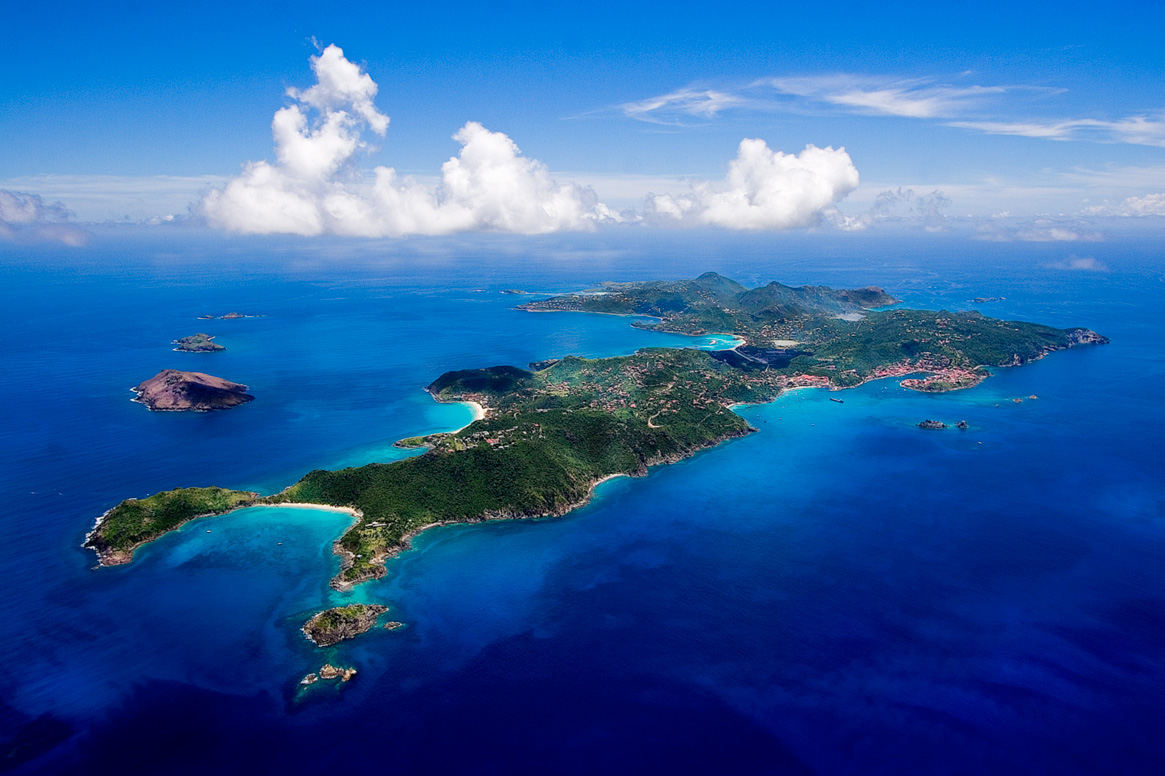
Early piracy work
The competitive advantage of C-LEVEL is that it considers modern maritime piracy in general, and Somali piracy in particular, as the sum of related but competing and ever evolving ongoing criminal enterprises.
Modern piracy may seem to outsiders be just one big and amorphous threatening organism or even a conspiracy of organisms hell-bent on terrorizing merchant ships and even yachts, but it's actually more a thriving and constantly adapting criminal industry - a complex adaptive system - where actors learn from each others' mistakes and successes and constantly discover new opportunities. Players compete with each other more than they conspire.
Unfortunately, much of the public and even some private reporting and analysis is of a secondary if not even tertiary nature, and so errors in interpretation are not only often not caught, they are compounded and repeated.
For example, many pirate observers, even the very good ones, tend to blur things and talk about "THE Somali pirates". They talk about Somali pirates as if they were a unified conspiracy to terrorize merchant mariners. Or they get engrossed in the details of just one "pirate action group" and lose sight of the higher order forces at work. The result is that they can't recognize trends or make reliable forecasts.
Michael G. Frodl, Esq. and his C-LEVEL Maritime Risks US-based team and their network of independent collaborators in the US, Europe, Middle East, Africa and Asia work with reports authored as close as possible to the events (at the wave tops, as the name "C-LEVEL" - for "sea level" - implies when spoken).
They sort through hundreds of daily online open source reports, receive tips in the form of unpublished reports from people close to the action, compare all those inputs to models developed over years of studying modern maritime piracy, float their findings discretely and get feedback from their extensive network of senior level consumers of intel who are themselves privy to information that never gets into the public domain (at the corporate officer level, as the name "C-LEVEL" - for "Chief Officer Level" - implies when written).
This continuous loop of bottom-up collection, comparison, and analysis offset by top-down feedback allows constant updating and adjustments of models and permits early trends recognition, dynamic tracking and forecasting of piracy threats, even long range.
Michael and his team are not new to using business modeling tools for the analysis and forecasting of behaviors of outlaw groups. They created differentiated and dynamic business models to analyze al Qaeda - the "Afghan Arabs," the newer affiliates that swore personal allegiance to OBL, and the independent cells inspired by but not connected to either.
As a result, Michael and his team were able to make successful long range forecasts leveraging the insights the models allowed them, including on attempts to influence the 2004 US Presidential election (based on the Madrid train bombing precedent - the conservative Spanish government had been toppled), on attempts to wreak havoc through independent action (reports of spontaneously self-generated Islamist cells were emerging but being discounted by people who should have known better), and attempts to use WMD in a terrorist attack (reports that al Qaeda researched NBCR were rampant but Michael and his team conclude the threat was more hype by OBL et al. than reality - only a "dirty bomb" seemed practical).
Forecasts by Michael and his team flew in the face of the conventional wisdom of many experts - many an "Orange Alert" that Michael and his team were asked to weigh in on was debunked, while other threats they DID warn of were never included in any DHS warning - only their clients or close confidants got them. This earned Michael and his team respect among their underwriting, banking and air transport industry clients, as well as among senior people in the USG.
The forecast about 2004 elections was used by the private firm assuring security at the Republican presidential nominating convention in NYC. The forecast about the growing threat from spontaneously self-generated Islamist cells was vindicated in less than a year by the July 7, 2005 London Tube bombings - since then many more attacks have fit the forecast. The forecast about WMD threats was used by the mortgage banking and real estate development community to weigh risk mitigation improvements against the threat of dirty bombs - the only realistic NBCR threat. The forecast was also used by a major underwriter to review existing policies and exclude "dirty bomb" coverage that had been inadvertently granted through fuzzy contract language.
This business modeling approach allows Michael and his team to analyze piracy and counter-piracy events from an unusual angle. They can anticipate how pirates will pursue immediate as well as distant opportunities, as well as how they will respond to the latest counters to their efforts, in a way that most analysts "black-boxing" pirates and viewing them as just another form of terrorism are incapable of doing.
The results have already come in for a few years now and Michael and his team have been many times a year or more ahead of events.
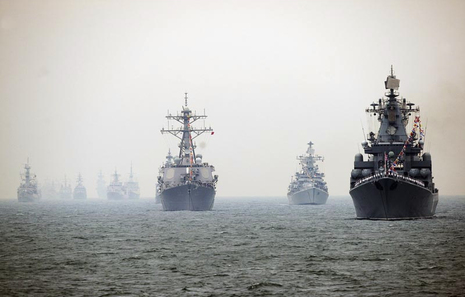
First long range Somali piracy forecast - December 2009
Michael was able to warn a senior maritime strategist in the Office of the SecDef and advising the SecNav as early as December 2009 about the some Somali pirates' moving towards longer range raiding - because their higher overheads would be more than compensated by the opportunity to raid a wealth of unsuspecting tankers sailing low and slow and unconcerned to East Asia as they passed by western India.
Michael also warned of the longer range raiders tilting more towards maritime kidnaping and hijacking only the most lucrative prizes for return to Somalia. C-LEVEL anticipated attempts by foreign navies to intercept the freshly hijacked ships during the longer voyage back to pirate ports in Somalia - it was one of the few vulnerabilities in the evolving pirate business model.
The December 2009 briefing to the OSD was recast as a column on changing Somali pirate tactics and published in National Defense magazine (a free copy is available upon request).
Exactly one year to the day after briefing the Pentagon, Michael and his group were independently vindicated by the Joint War Committee at Lloyd's of London when on December 16, 2010, it expanded the "Listed Area" where "war risk" premiums have to be paid and included the waters west of India. Longer range Somali raiders had earlier in 2010 become a constant and significant threat there, precisely as Michael had warned in 2009 (no other private intel group had issued warnings so precise and so early).
The December 2009 warning about a tilt into more maritime kidnaping is also being validated still today, as longer range raiders now attack small personal yachts and snatch civilian boaters (the SV Quest and its 4 Americans most notably, but also a Danish family only 2 days after the Americans were murdered).
Many of the other predictions in the first long range forecast have still are playing themselves out.
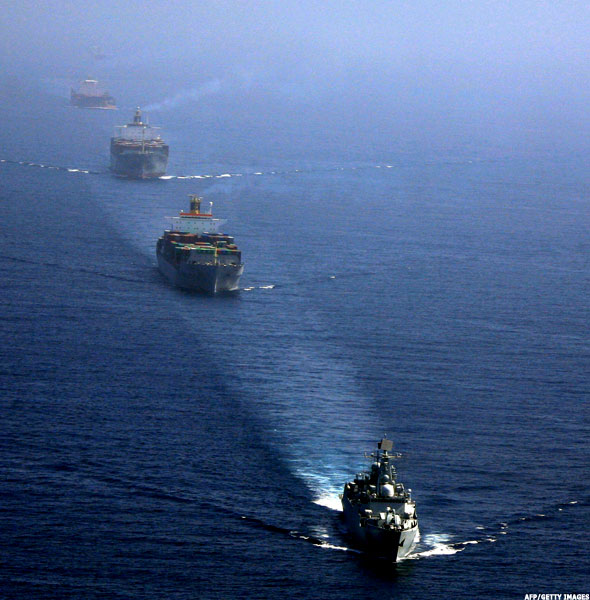
Explaining forward-basing - "X marks the spot" - January 2010
The first long range forecast was quickly followed by a short paper analyzing rapidly evolving Somali forward-basing strategy and tactics ("X marks the spot" echoes the stories of old pirate maps and buried treasure). The paper was prompted by people who had read the forecast and asked how pirates could operate at such increasingly long distances from home.
The smarter long range raiders when displaced the paper explained didn't just keep moving until they reached the next shipping lane and just started raiding there. If they did, they'd only get the occasional passing ship, easy to miss on the high seas, and would have to break off soon to go back home to resupply. That's a drop in revenue accompanied by an increase in overhead. Those pirate groups would soon run out of funding unless they were just lucky and caught a VLCC almost against the odds.
The smarter long range pirates the paper explained would look for a significant increase in ship traffic and so would focus on intersections or convergence points of major sea lanes (for example, where the Gulf of Aden to Fremantle route converges with the Hormuz to Cape route), and then among those, favor ones that were a day or two steaming at most from a friendly island where fuel, food and water could be acquired from the natives (for example, one of the smaller islands of the Seychelles).
Long range raiders the paper explained were ready to increase their overhead as long as they were able to increase the promised return on those investments even faster. The forward-basing approach described would allow for this.
The January 2010 paper also showed that very early on - earlier in fact than anyone else - Michael and his team already had identified the waters south of India and Sri Lanka as meeting all the criteria. Since then, the signs have become even more supportive of that conclusion.
TANKER RANSOMS
Record ransoms for hijacked oil tankers - November 2008 to present
[ Please run your cursor over pictures so explanatory captions can pop into view. ]

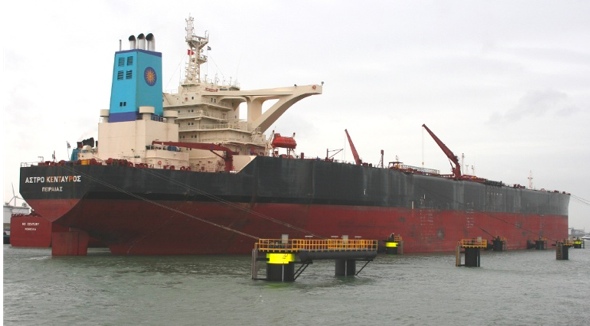
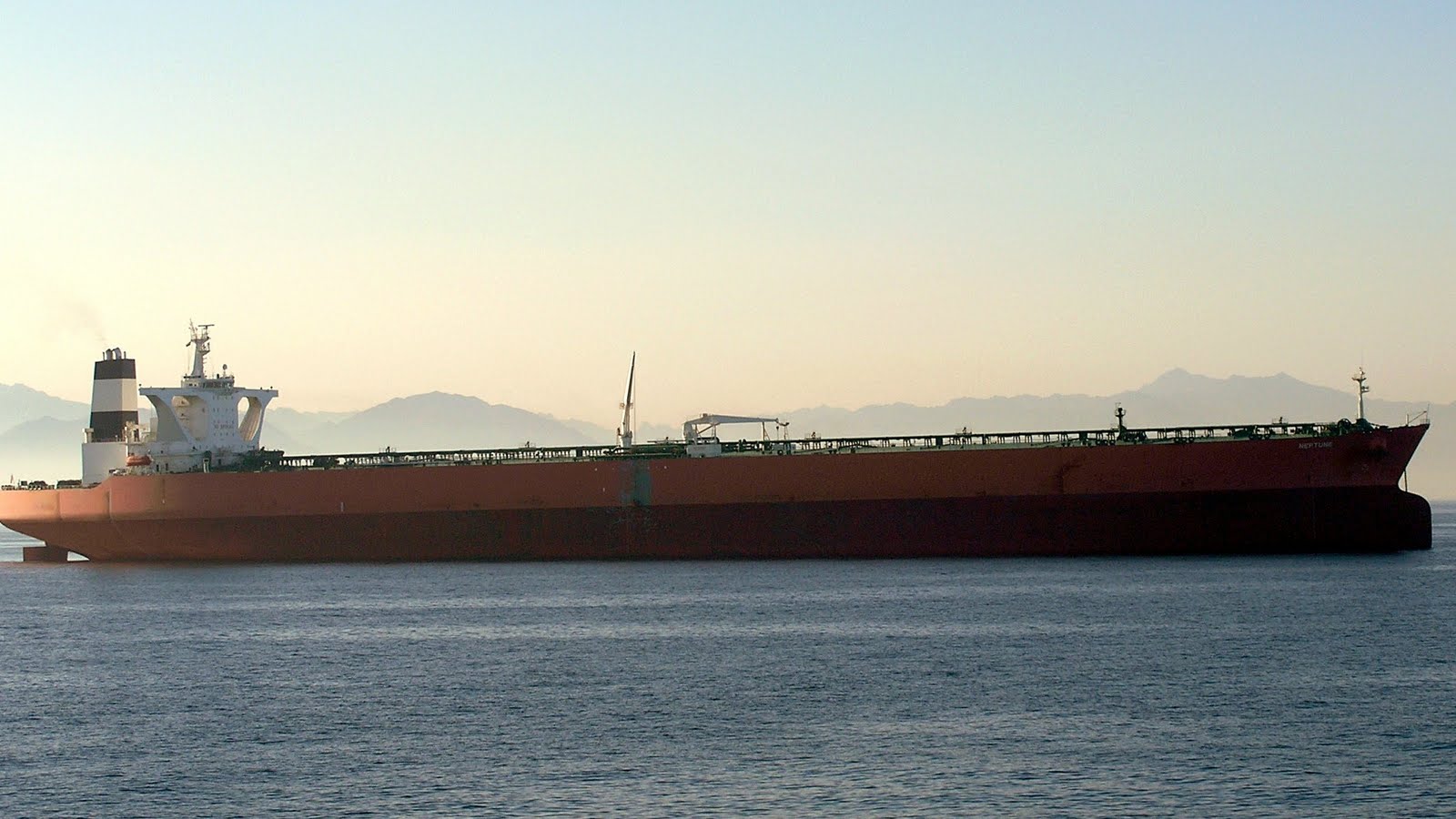
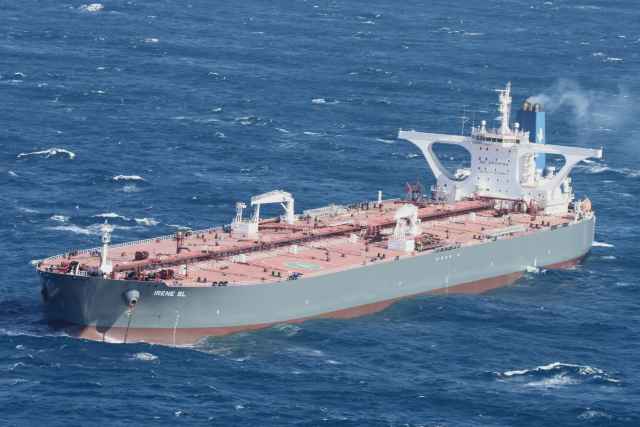
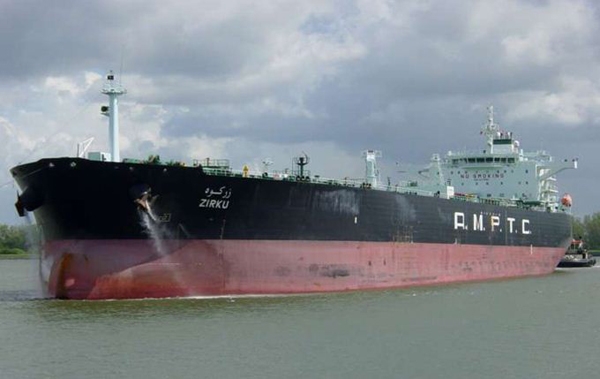
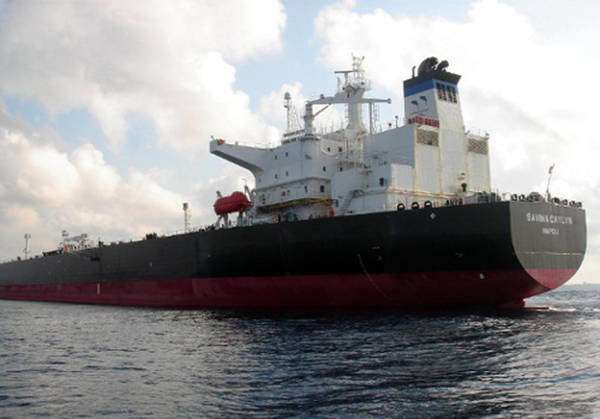
Second long range Somali piracy forecast - April 2011
C-LEVEL developed a second long range forecast last year that reviewed recent trends and built them into the original long range forecast's business model of Somali piracy.
The growth in hijacking local trawlers and even large foreign merchant vessels which the pirates put to work as motherships and use the crews as human shields to prevent interruption by foreign navies has been leading to a premium being put by long range raiders on leveraging human lives so as to operate hijacked ships, protect them from attack, and make money.
Pirates were also beginning to pivot again to avoid focused repression by warships - this time not out of the Gulf of Aden, but to avoid the waters immediately to the west of India.
C-LEVEL forecast some pirates would make a tactical retreat to the waters south and east of Oman to avoid the Indian warships to the East and the patrols of the IRTC to the West. The waters about 150 nautical miles to the SE of Salalah would become a hot spot in 2011 - and still are.
C-LEVEL forecast - and still believes - that other pirates, namely the most ambitious and professional long range raiders, would move into the waters South of India where they could keep attacking tankers headed to the Far East with less risk of interference by Indians. Reports from NATO and a UK PMSC in early 2012 warned of a growing presence of Somali pirates to the East and North of the Seychelles and Maldives.
C-LEVEL still believes that Somali pirates using forward bases (also predicted in the December 2009 briefing) in the Maldives, as well as relying on arms and other support from the remnants of the LTTE in Sri Lanka, will present an even greater threat to merchant vessels.
C-LEVEL believes that Somali pirates will be able to threaten not just the sea lanes of the NW Indian Ocean as they go around the Southern tip of India, they'll also be able to attack the Cape-Malacca route that so far has escaped much if any predation. The warnings from NATO and the PMSC already mentioned above allude to this possibility.
C-LEVEL believes that as a result Somali pirates will be one step closer to attacking the approaches to the Western end of the Strait of Malacca.
MAP & CHART GALLERY
Strategic Sea Lanes of Communication (SLOCs) in the Indian Ocean
[ Please run your cursor over pictures so explanatory captions can pop into view. ]
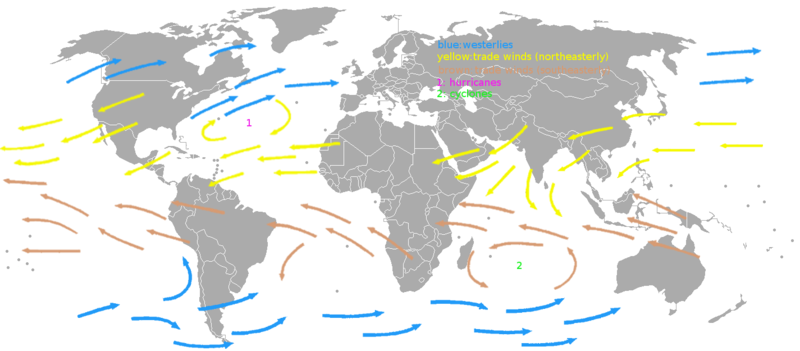
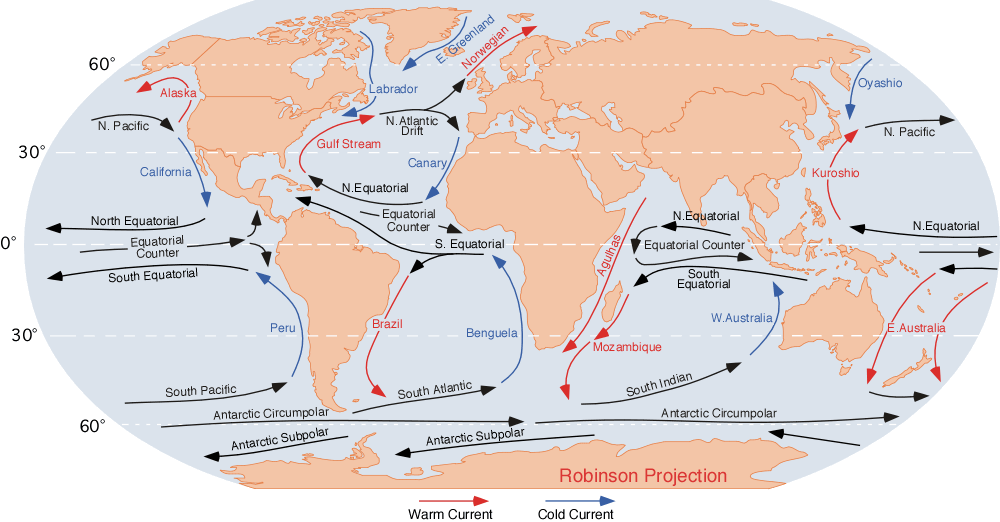
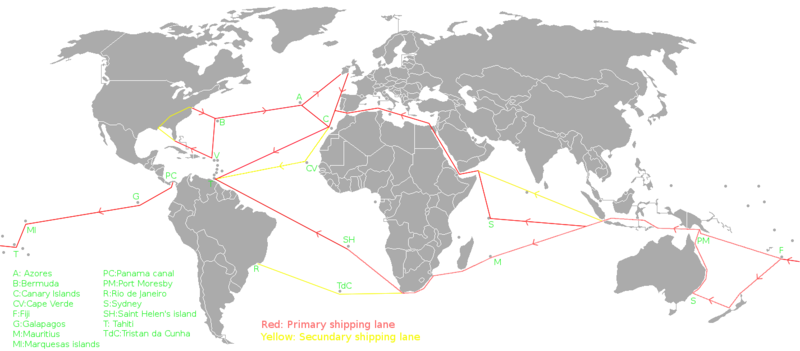

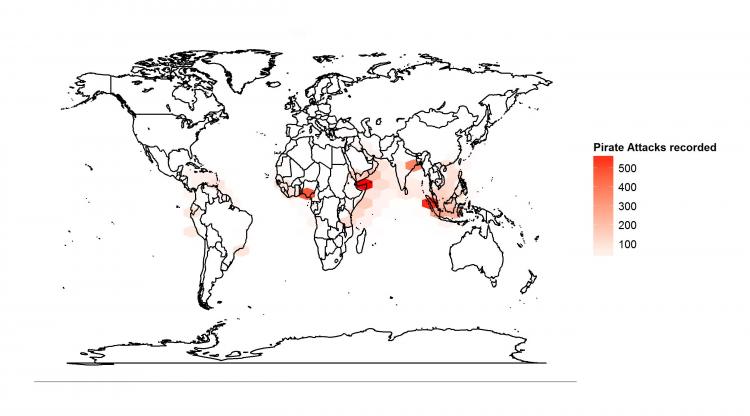

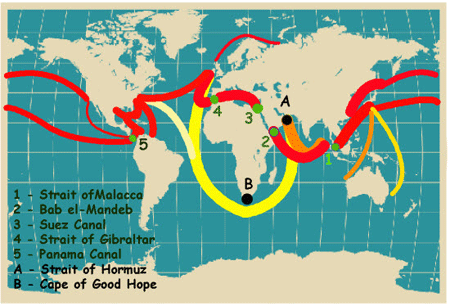
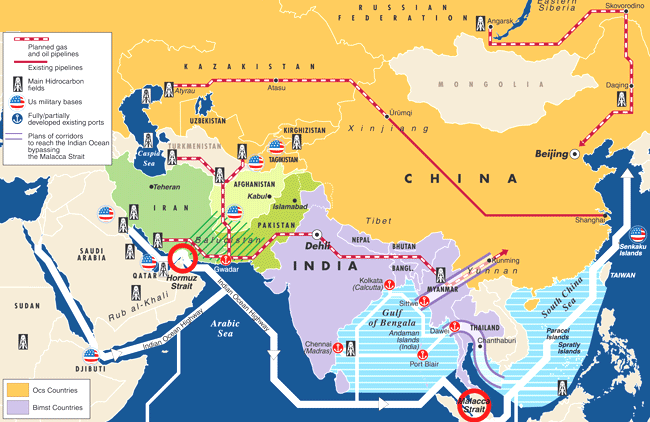


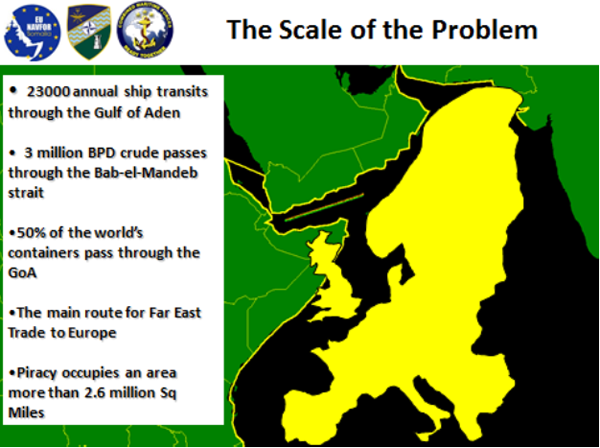

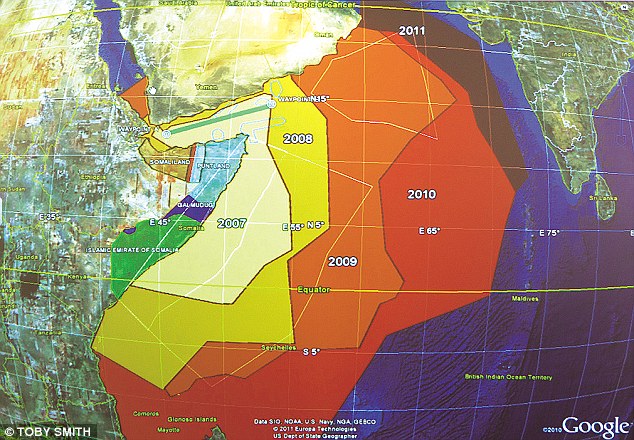
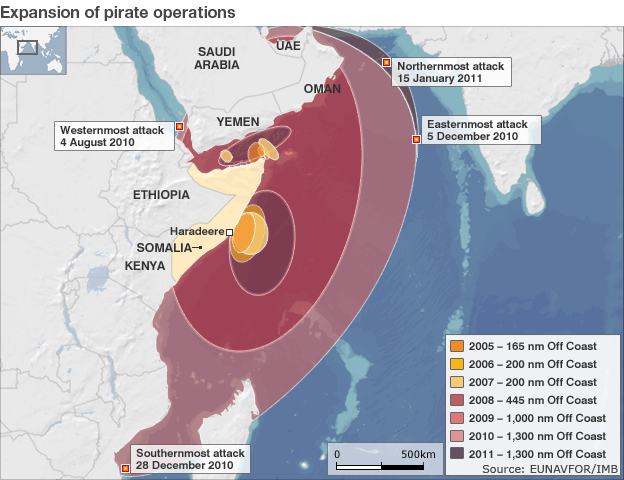
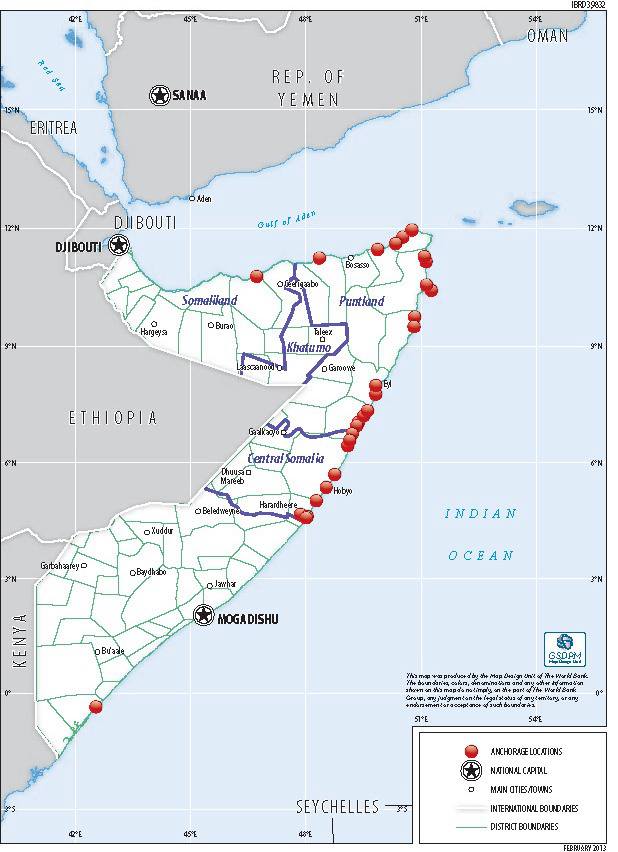
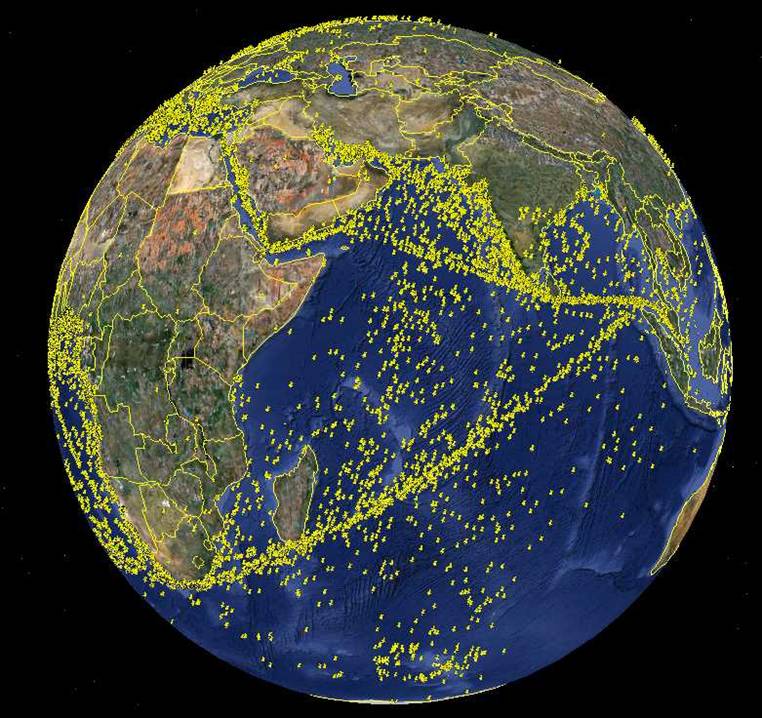
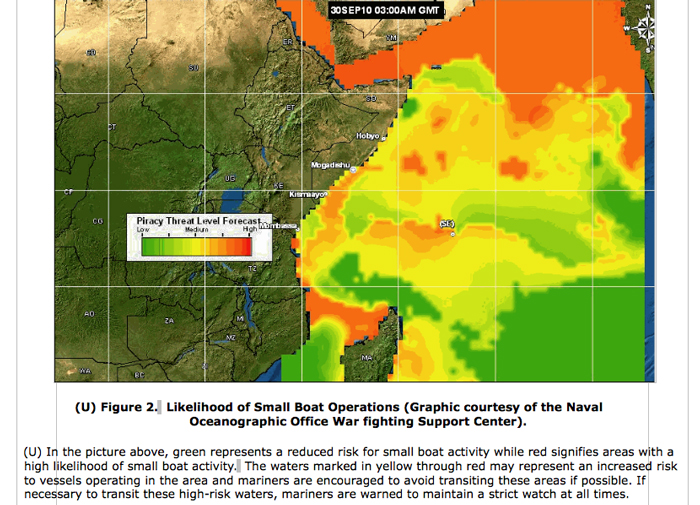
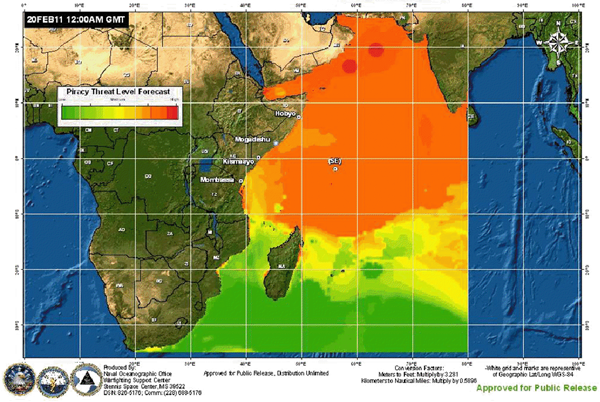
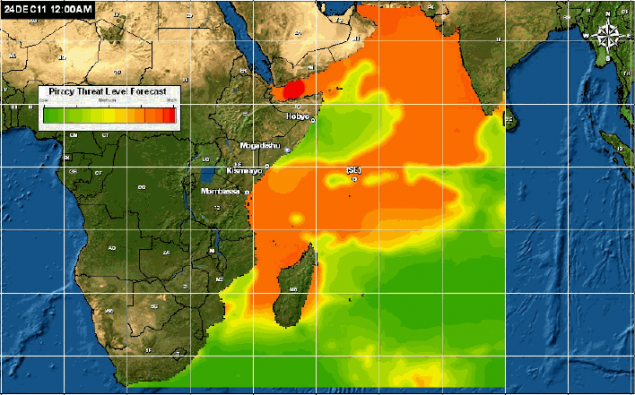
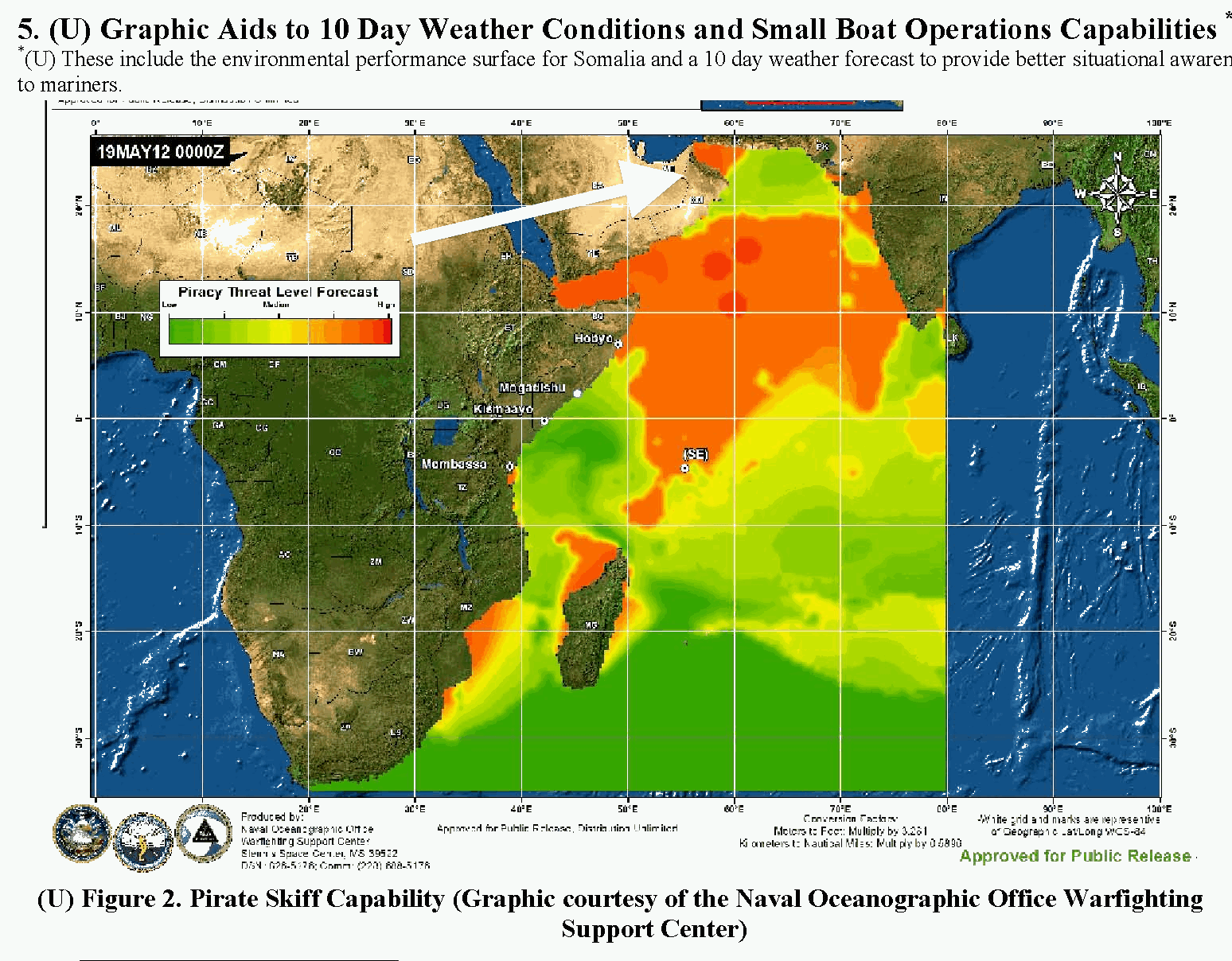
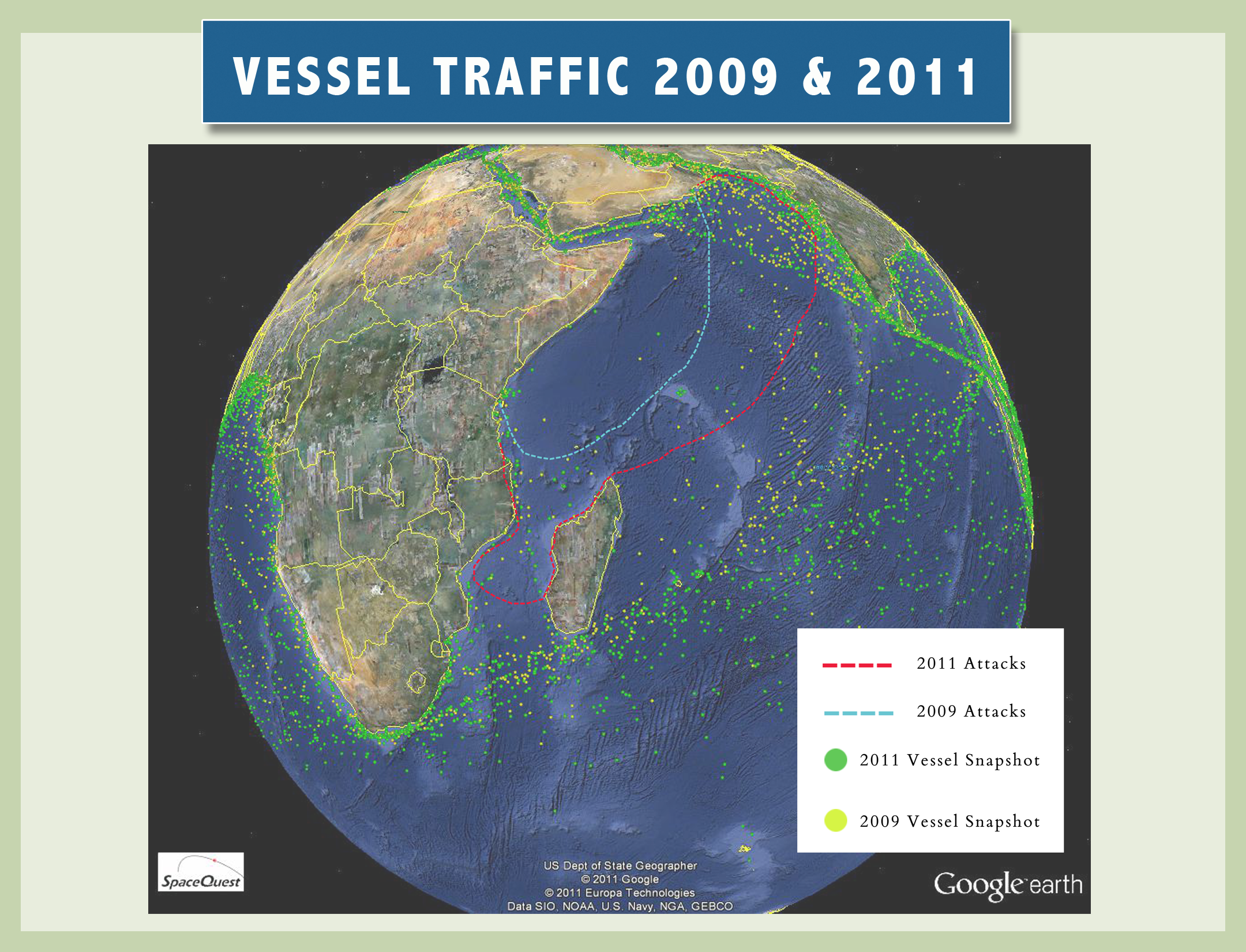

Somali piracy trends in the Gulf of Aden & NW Indian Ocean region
Since the fall of 2011, C-LEVEL has been increasingly troubled by the reporting about Somali piracy. Some groups that became involved only very recently in reporting Somali piracy started arguing that Somali pirates had destroyed their business model - this because they were becoming bad faith negotiators - and shipowners were losing patience with the pirates.
We issued an in depth refutation of the hypothesis, and then in rapid succession also issued a series of follow ups. It became clear in just over a month after we issued our warning against the "happy talk" that the Somali pirates were headed to make their biggest haul ever in 2011.
If in 2009 Somali pirates earned just over $70 million US in ransoms, and in 2010 just over $80 million, then in 2011 they earned over $150 million - and that from returning only half as many ships. That is not a doubling of their rate of return, but a quadrupling.
If that is a "broken" business model, we dare not want to see a successful one!
And while the number of successful hijackings dropped significantly in the second half of 2011, the number of attacks continued to grow. That is something that many public reports gloss over - but that merchant vessels and their crews using pirate-infested waters have to endure.
A combination of closer-to-shore harassment by the warships of foreign nations, more consistent respect for Best Management Practices, better intelligence about where pirates are operating, and armed guards on a growing number of merchant vessels has forced the Somalis to improvise and adapt. Unfortunately for maritime commerce, the pirates are getting even more aggressive and violent.
They have abandoned using hijacked merchant vessels as motherships for long range raiding - because it was too easy for foreign navies to track them down and warn other ships, while the fuel costs for operating large vessels were too high. So the Somalis returned to using hijacked local fishing boats - many times dhows - and using them as motherships which could hide in plain sight from anti-piracy patrols.
Somali pirates are now also attacking on the comparative peripheries - not just around and to the North of the Bab el Mandeb, but also in the Mozambique Channel, and even closer to the Strait of Hormuz - as patrolling by foreign warships is much lighter there and merchant vessels are more likely to let down their guard there. ALSO, the more ambitious Somalis are indeed probing in the waters to the South of India and Sri Lanka.
In a troubling related development, C-LEVEL noted an increase in attacks in those waters, but attacks that Somalis can't possibly all be responsible for. We must conclude that the example of the Somalis has inspired local copy cats.
It's by no coincidence that the Italian tanker Enrica Lexie was embroiled in an incident in February 2012 off Kerala - ships have been attacked regularly in waters off India and armed guards have become very jumpy and quick to defend their merchant vessels from approaching smaller craft.
Somali Piracy trends (as of September 2012)
Over the summer of 2012, attacks by Somali pirates dropped in frequency, and many of the hijackings were only of local fishing boats, used to operate as "mother ships".
As a result, some folks in the West have rushed to claim "victory" over Somali pirates - and depending on who you listen to, it's all because of what they and their comrades have done: the uniform military claim that they've been largely to credit, while private armed guard firms take the credit, and then Best Management Practices advocates claim they have been the main contributor. No one seems to want to acknowledge the other two - it's quite silly and actually a distraction - as all are in some way or another responsible.
But there is also more going on than meets the eye.
FIRST, as pirates became more proficient as negotiators in 2011, they learned to extract more cash by twisting a few shipowners' arms better, instead of rushing about and capturing any and all merchant vessel they could and negotiating like amateurs. Any how, hunting for new prize has become rather prohibitive, given the chances of being shot at by private armed guards, or run down by patrolling warships that now don't hesitate to launch intercepts and rescue operations.
The latest news of a hostage being executed fits well into the line of "no more Mr. Nice Guy - pay up or pay the consequences". If the owner of the MV Orna pays up promptly, we expect that executing a hostage after negotiations drag on "too long" per the pirates will become common for all the pirate gangs.
SECOND, pirates were cautioned by their politician friends (and leading investors and partners in crime) in Mogadishu and in Puntland that their animated antics were threatening the flow of foreign aid that was meant to stabilize Somalia - the politicians were now able to draw down more millions a week or month of foreign aid than the pirates could ever dream of - so the pirates calmed down - probably with a promise of the millions in diverted foreign aid.
We are also aware that at least one leading Somali pirate gang has plowed some of its ransom earnings into the construction of a new luxury hotel for Mogadishu - that may very well be used by visiting foreign donor teams. The pirates are making money the smarter way right now.
THIRD, Somali pirate bosses read the business newspapers and maritime trade press - and so they are aware of the fact that shipowners are under more pressure financially this year than in 2009 (just after the 2008 financial markets meltdown, the maritime shipping world took it on the chin, but most shipowners and shippers still had some cash left aside - today, all those reserves are gone).
The craftier pirate bosses are therefore calming their game not just so as not to annoy their politician buddies and get a piece of the new monies flowing into Mogadishu - but also so as to encourage shipowners and shippers to declare victory over pirates and abandon the use of private armed guards. Many of the foreign navies engaged in anti-piracy ops off the Horn of Africa are also under unprecedented budgetary pressures. Some are looking for any excuse to declare victory over piracy and send ships elsewhere, or even decommission them outright.
ERGO, by 2013, if the three trends play out as we think they might, Somali pirates may very well return rested, smarter and less worried about meeting armed guards on the ships they covet or being intercepted by a fast warship once they've seized a merchant vessel or big tanker.
Recent piracy trends in Gulf of Guinea and SE Asia / South China Sea
C-LEVEL was asked in January of 2012 by a client in London to focus on the rising piracy threat off Nigeria and throughout the Gulf of Guinea. We reviewed 3 years' worth of reports and concluded that piracy was seriously under reported in the area, and for many reasons.
While the global press now has a good idea of what is happening off the Horn of Africa, perhaps because of the human interest aspect to the stories of crew members from all over the world being held hostage for months if not years in Somalia, that same press has not shown anywhere near as much interest in the victims of piracy off Nigeria.
Perhaps because many of the victims among the crew members of attacked ships are locals who are threatened and beaten mercilessly - they know better than to talk and have the pirates come back and finish them off where they live. That is the most direct reason for under reporting.
The cost of maritime to the economies of West African nations is equal if not greater than that of Somali piracy to the economies of East African nations - but stolen crude oil as well as refined petrochemical products like gasoline or diesel, the most common target of pirates, is almost immediately sold back into the immense black market of oil in the Gulf of Guinea.
While private security in the form of armed guards aboard ships is the main topic of discussion when Somali piracy is being addressed, it represents just a minor fraction of the cost of private security to foreign oil companies operating in Nigeria - by one count, almost $3 billion US every year. The cost to Nigeria from stolen and trafficked oil is even greater.
Despite the great costs to industry and society, it's unlikely that modern maritime piracy will be repressed off Nigeria, Benin and the other coastal states, as too many people in government or uniform in Nigeria benefit from the traffic in oil.
We have decided to monitor piracy in this area closely as it's not going to be turned around any time soon, and in the mean time, Nigerian pirates and their West African brethren are being inspired at least in part by Somali pirates. In the first quarter of 2012 observers detected the adoption of motherships by Nigerian pirates - hijacked fishing boats are allowing them to raid ships well over 100 nautical miles from shore - something unheard of even late last year.
ALSO, observers noted some pirates experimenting with short-term kidnaping of crews and officers from ships. Kidnaping foreign oil executives or wealthy locals on land in Nigeria - especially in the Niger Delta - has been a problem for years. Maritime pirates operating just off that same Delta had shown little interest in kidnaping crews, though. But where the pickings have been found slim - as in little cash or jewelry or consumer electronics - some pirates have opted to grab people off of ships. This trend needs close watching.
SE Asia and the South China Sea have seen their share of piracy in the past decades, but a concerted effort by nations in the region, especially Malaysia and Indonesia, and the disruptive effects of the Boxing Day tsunami, led to a major drop in incidents. There has been stirrings though in the past year or two, though - and we monitor developments in the region closely.
Most acts of piracy in the region are really armed robbery in ports as the ship is at rest, and when there is real piracy at sea, it is more armed robbery of the crew and their personal effects.
Nevertheless, there has been at least a couple of short-term kidnapings of crew off of ships using the Strait of Malacca, and there has been a growth in piracy incidents also in the waters around Indonesia.
We are also aware, given our regular trips to Asia and consultations with shippers and shipowners, of troubling "Somali-like" incidents off Indonesia - the use of motherships and fast attack skiffs has been observed there but not widely reported.
We doubt that Somalis are to blame - the most advanced Somalis are still probing just to the east of the Maldives and Seychelles as well as just South of India and Sri Lanka. So this may be local copy cats.
We believe that Asian pirates, like West African pirates, follow the news and compare strategy, tactics and even business models with the Somalis. While the Nigerian pirates are probably the most successful pirates of all three regions (based on the rate they make money - it takes an average Nigerian pirate gang maybe perhaps only 10 days to make what it takes a Somali pirate gang an entire 10 months), we believe that some Asian pirate gangs could become very well reorganized and constitute a threat again to peaceful commerce in the region.
So while it's unlikely that Somalis themselves will be found raiding in the Straight of Singapore any time soon, we think that the Somalis are already casting a long shadow into Asia - all the way from SW Asia to now even SE Asia - as they've done into Western Africa. So one should not be surprised to observe sudden changes in strategy, tactics and even business models among previously predictable local SE Asian pirates. The learning curve could be considerably shorter if borrowing from Somali pirates is factored in.
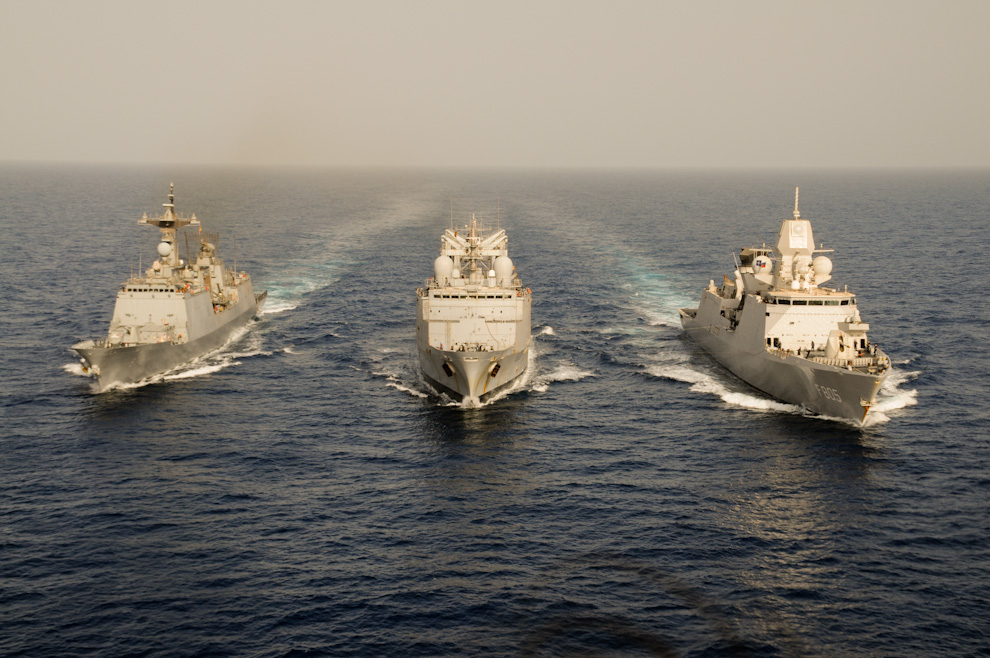
THREE LEVELS OF REPORTS & SUBSCRIPTIONS
Standard, Premium & Economy - for varying levels of interest, need & budget
C-LEVEL Maritime Risks produces a comparatively brief but comprehensive weekly round up of prioritized piracy & anti-piracy, as well as maritime terrorism, news.
We survey the world's daily, weekly and monthly press not just in English - and not just the English language press in the US and UK, but also other major English language countries such as India and Australia for example, as well as the growing English language press in places like China, Japan, Singapore and the rest of Asia, the Persian Gulf states and the rest of the Middle East, as well as Somalia, Kenya and the rest of Africa) - but also the world's press in French, Spanish, German, Italian, as well as Russian, Arabic and Chinese.
We further filter and prioritize news items based on confidential feedback we receive from people with their own humint from inside the piracy hotspots, as well as from key national capitals like Washington and London. Our small but influential and critically placed circle of "C-level" readers around the world - some people at the top of their organizations and so where all the intel "stovepipes" converge, as well as other people at "sea level" and so with unmatched views from the field- constitute our core feedback loop. We are in fact a collective intel ops.
Our flagship report: the WEEKLY EXPRESS NEWS UPDATE
The Weekly Express News Update - aka the "WENU", begins with an overview & analysis of the previous week's most important news, with thoughts about what the developments mean and where things are headed, followed by a prioritized outline with one line summaries with links to every underlying story, as well as links to online machine translations of every story not in English.
Our Standard Intel Subscription Package includes the WENU.
A Premium Intel Subscription Package exists for those with above average needs. It is the WENU plus personal support services, as in, the package for those who want to schedule personal briefings as needed, as well as get answers to their questions within 24 hours.
An Economy Intel Subscription also exists. It includes the "SUMMARY PLUS" - aka the "SP" - which is built from single line bullet points and clickable links to the underlying stories. It's just what's needed for those who don't want analysis and/or who cannot justify the costs of a standard subscription.
In addition, there is the SUMMARY (with no abbreviation), the lightest and briefest of our weekly reports. We reserve the right to dole is out carefully as we deem appropriate. It is not a paid-in product and should not substitute for either the SP or the WENU, but in some cases, we can and will provide it as a professional courtesy.
Sample copies of the Summary, the Summary Plus, and the WENU can be found on this site by clicking here.
ALSO, the Summary, Summary Plus and / or WENU can be received for free on a limited trial basis. Please just ask and we'll put you on the complimentary distribution.
Please contact Michael G. Frodl, Esq. directly for a free trial, as well as the most current information about our product line and pricing by sending an email to "mgfrodl" at the domain name of this website.
HISTORY / TUTORIAL
Piracy off Africa East & West, choke points, other risks
[ Please run your cursor over pictures so explanatory captions can pop into view. ]
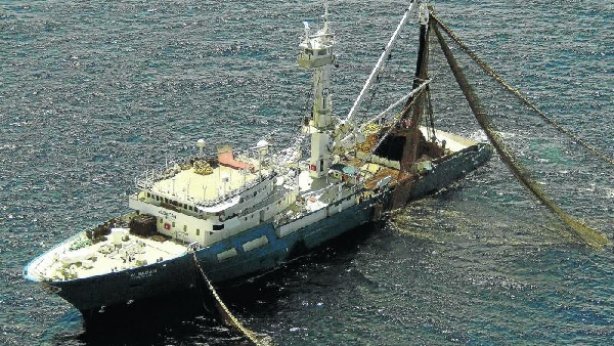
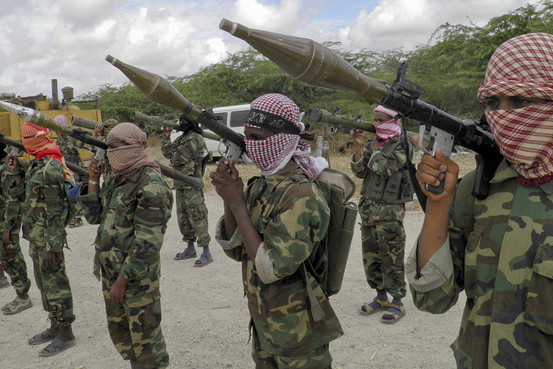

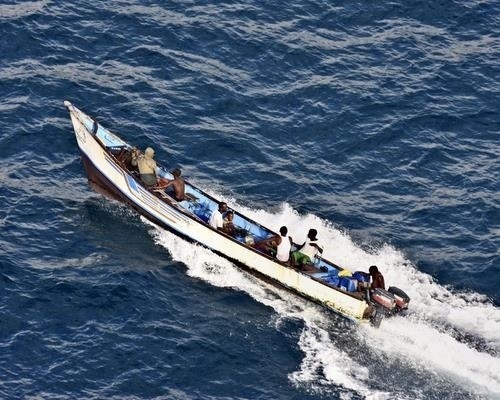
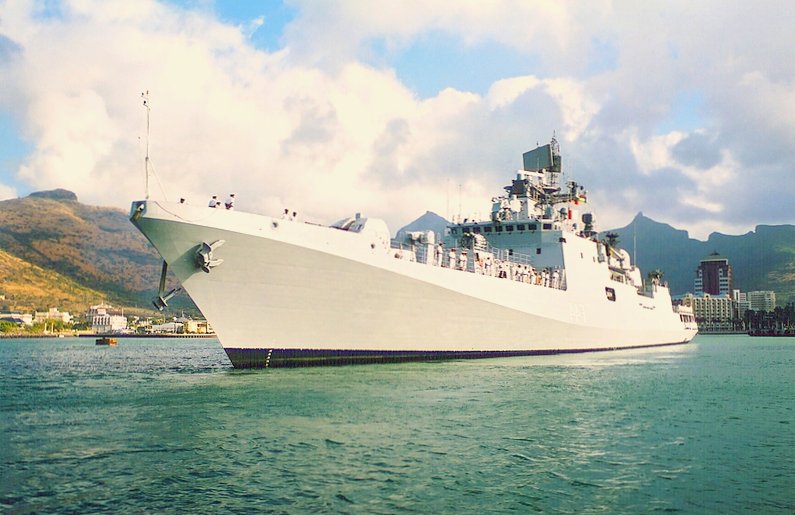

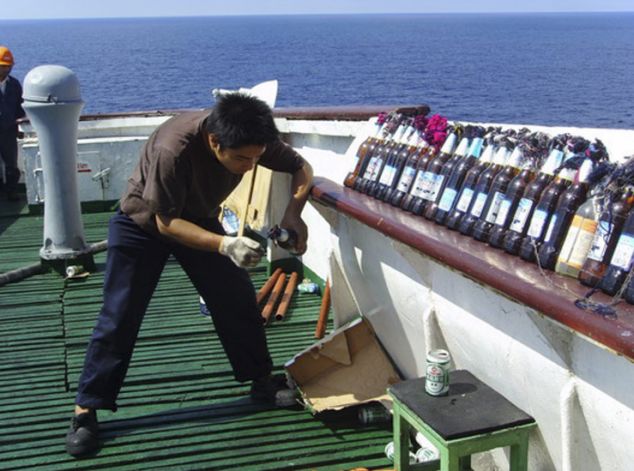
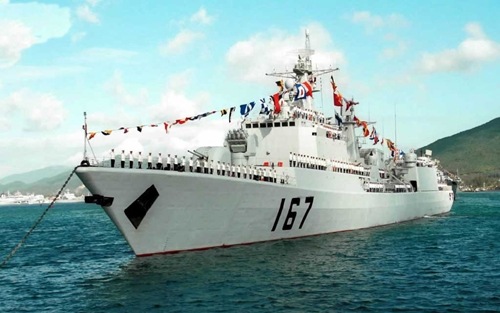
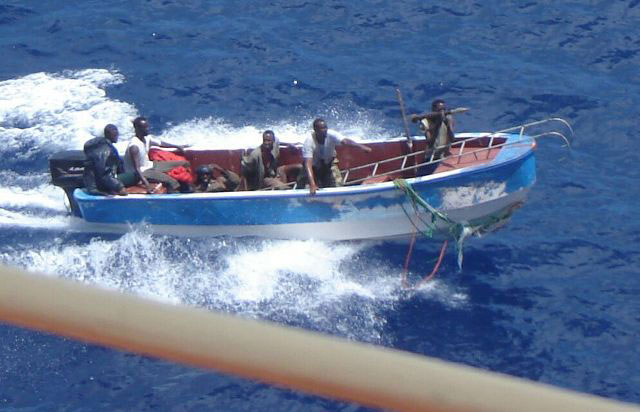
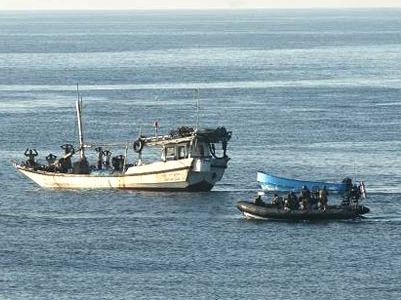
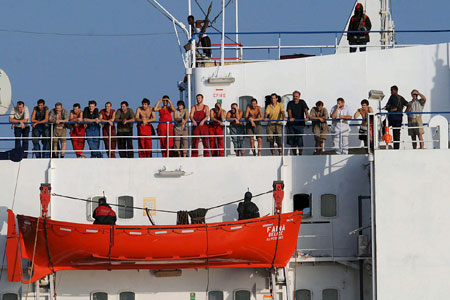

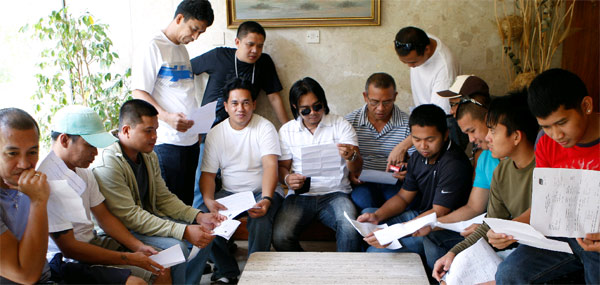
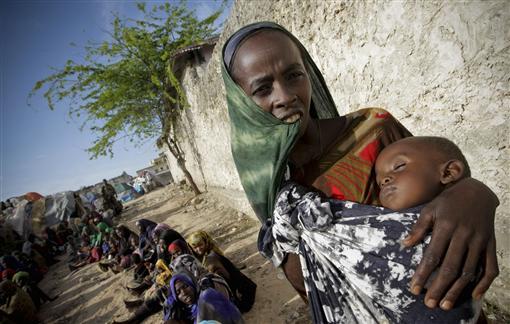
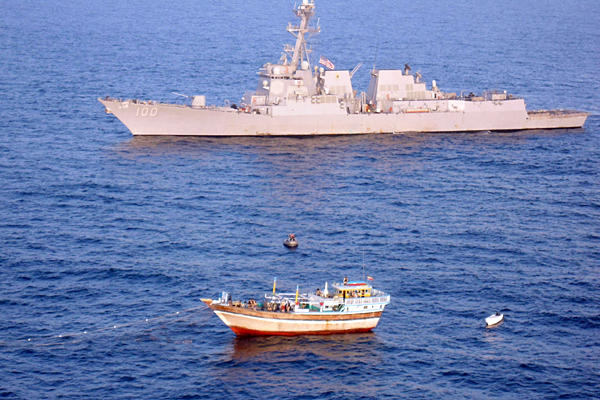
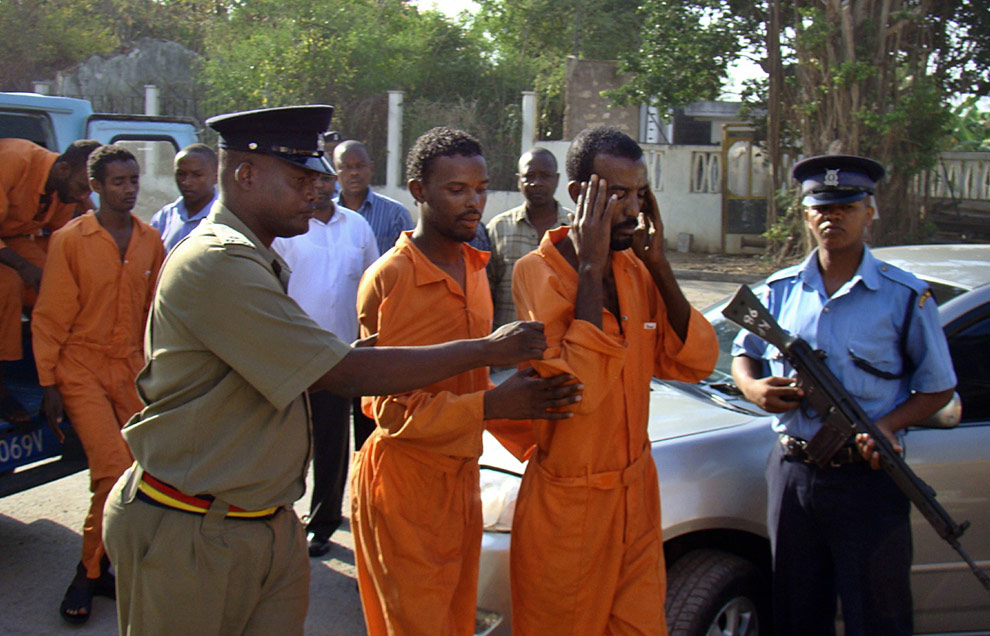
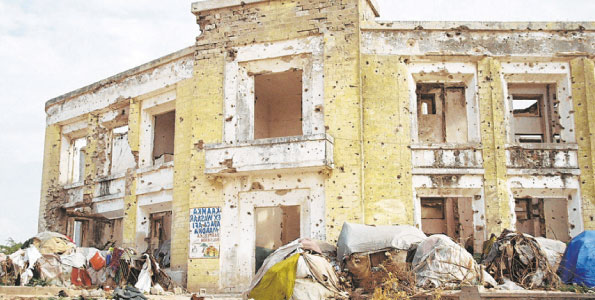
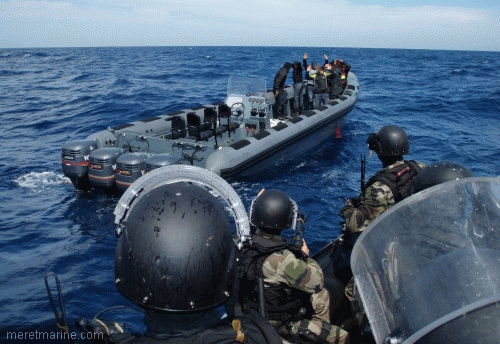
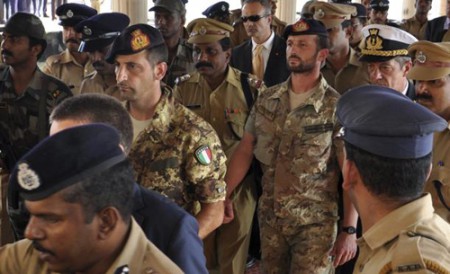
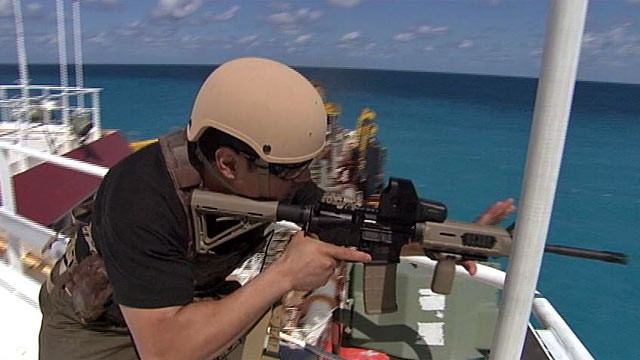

[ Above YOUTUBE video can be played by clicking here. ]
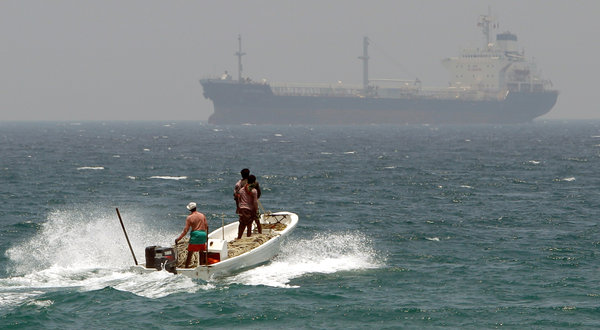
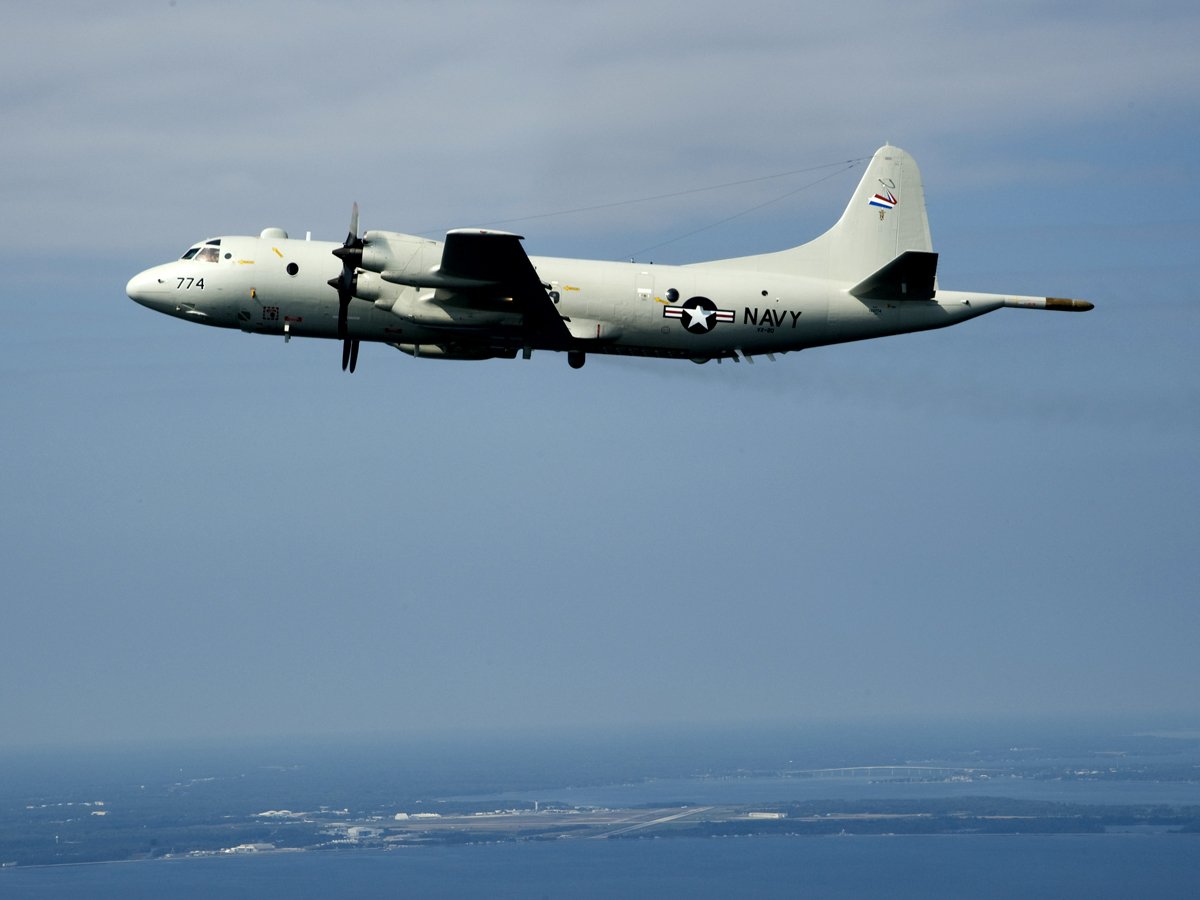

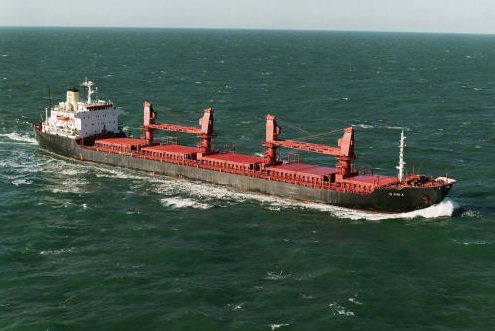


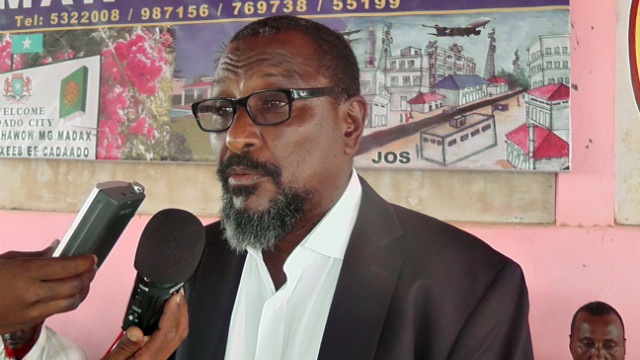
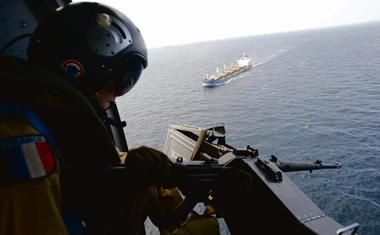

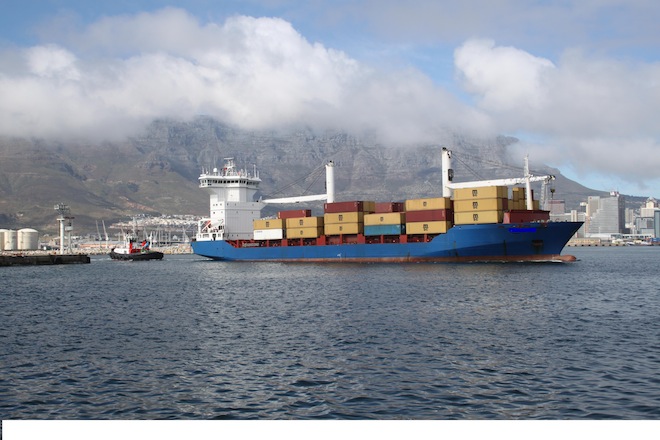
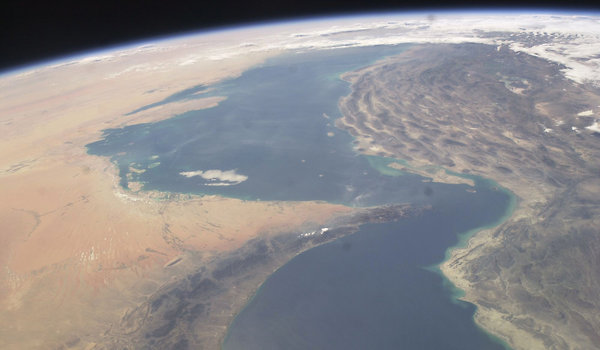

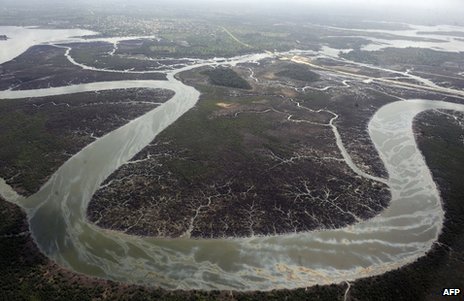
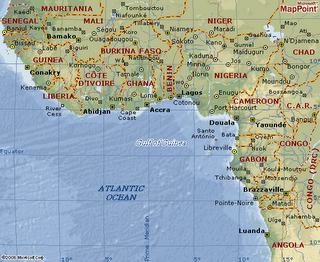
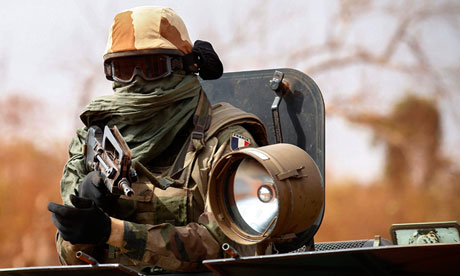
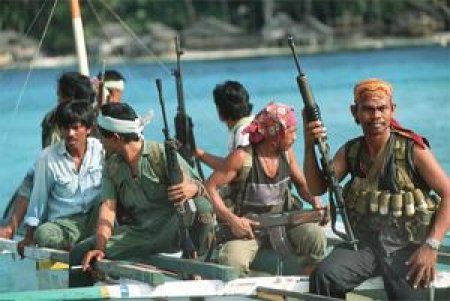
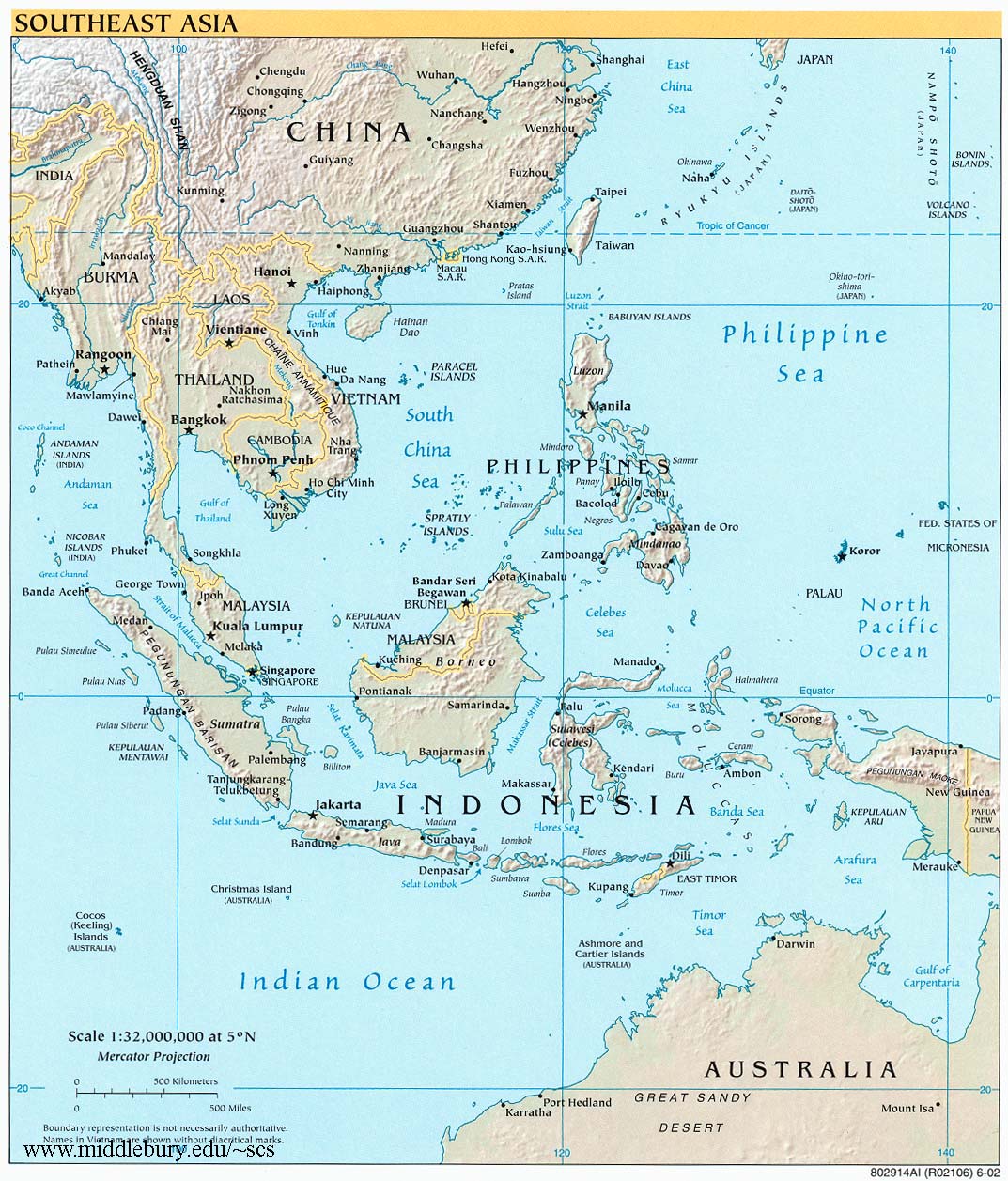
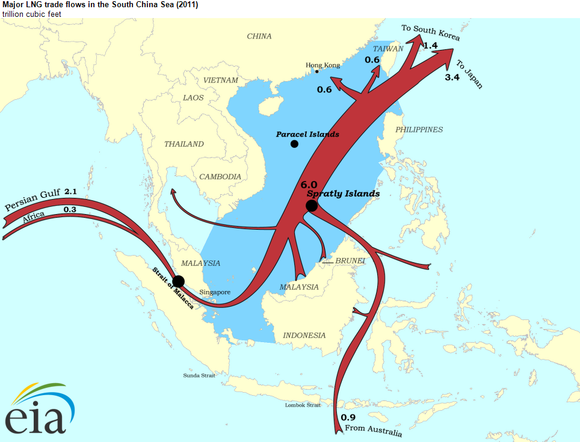


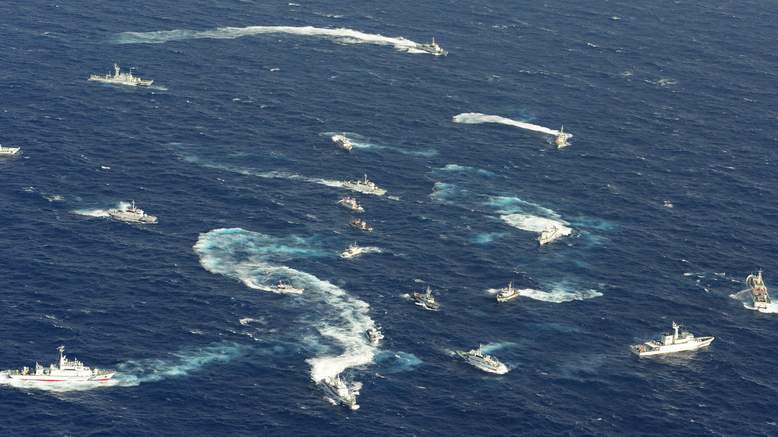
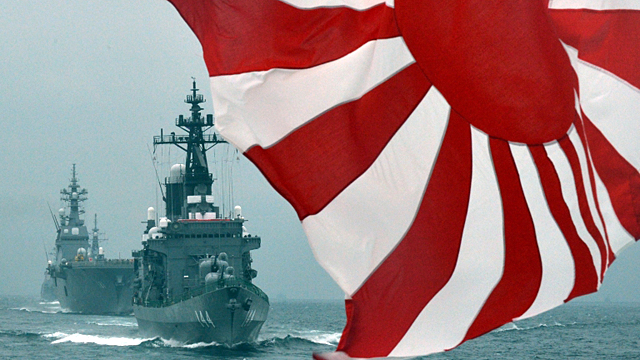
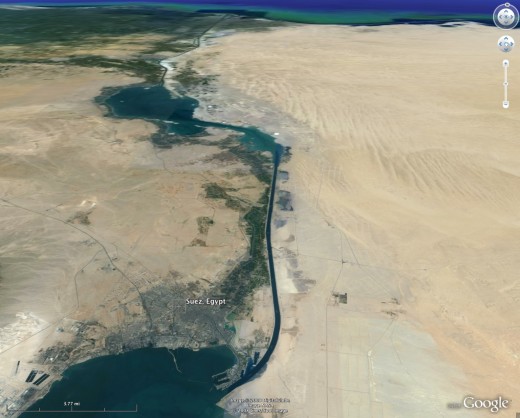
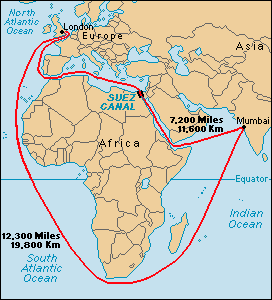

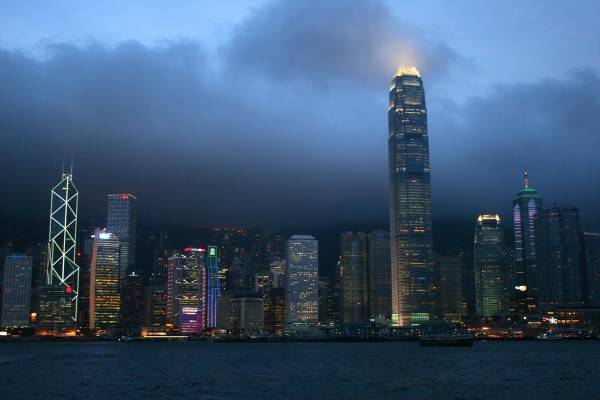
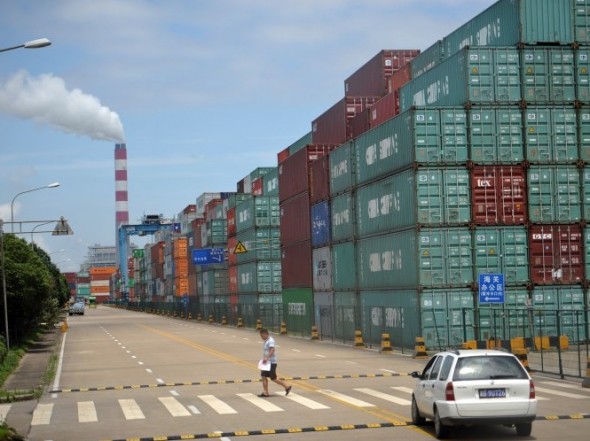
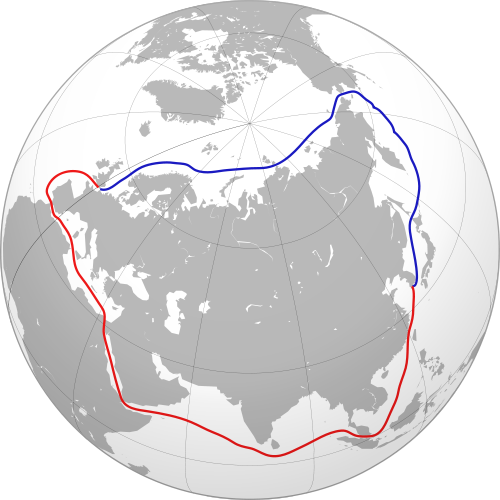

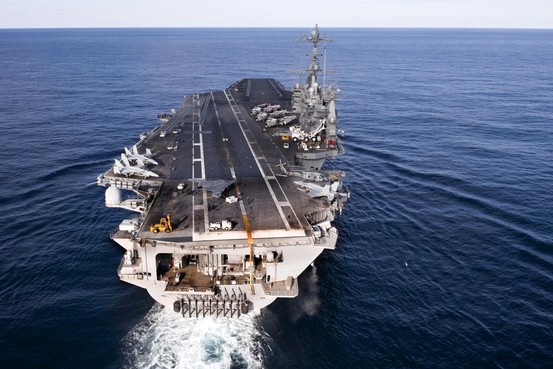
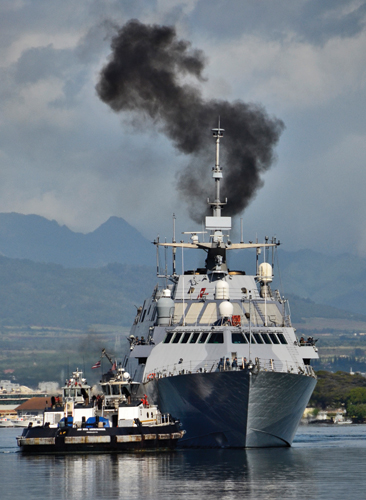

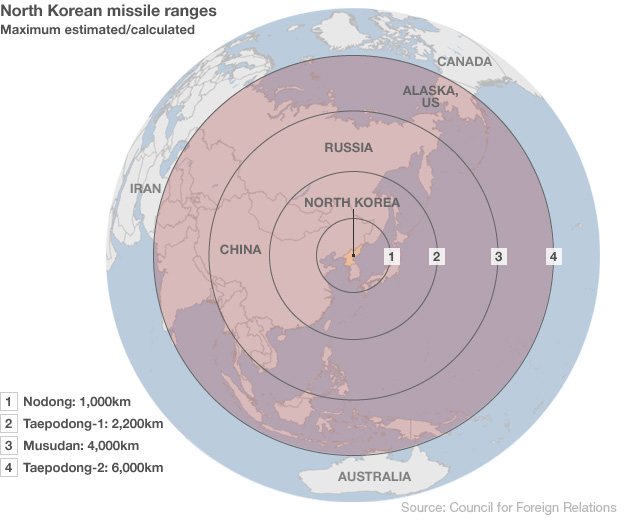
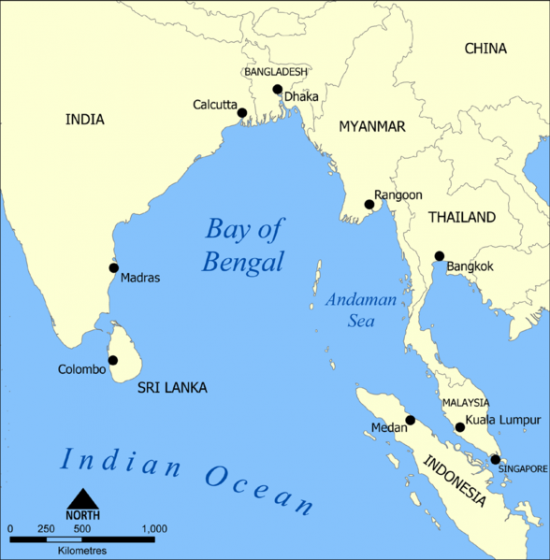
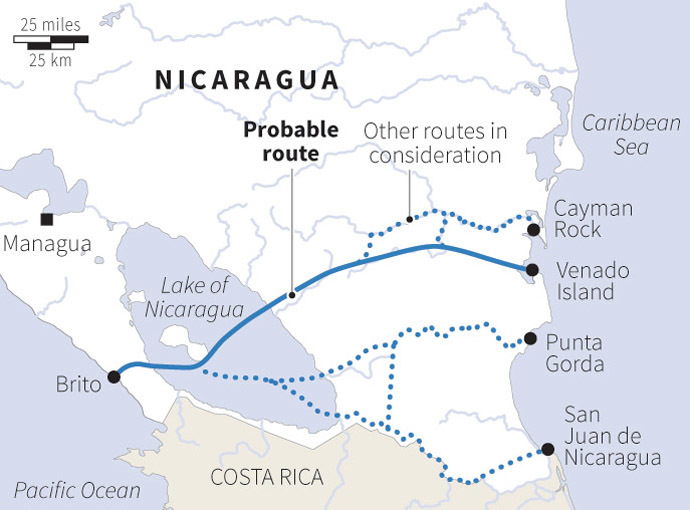

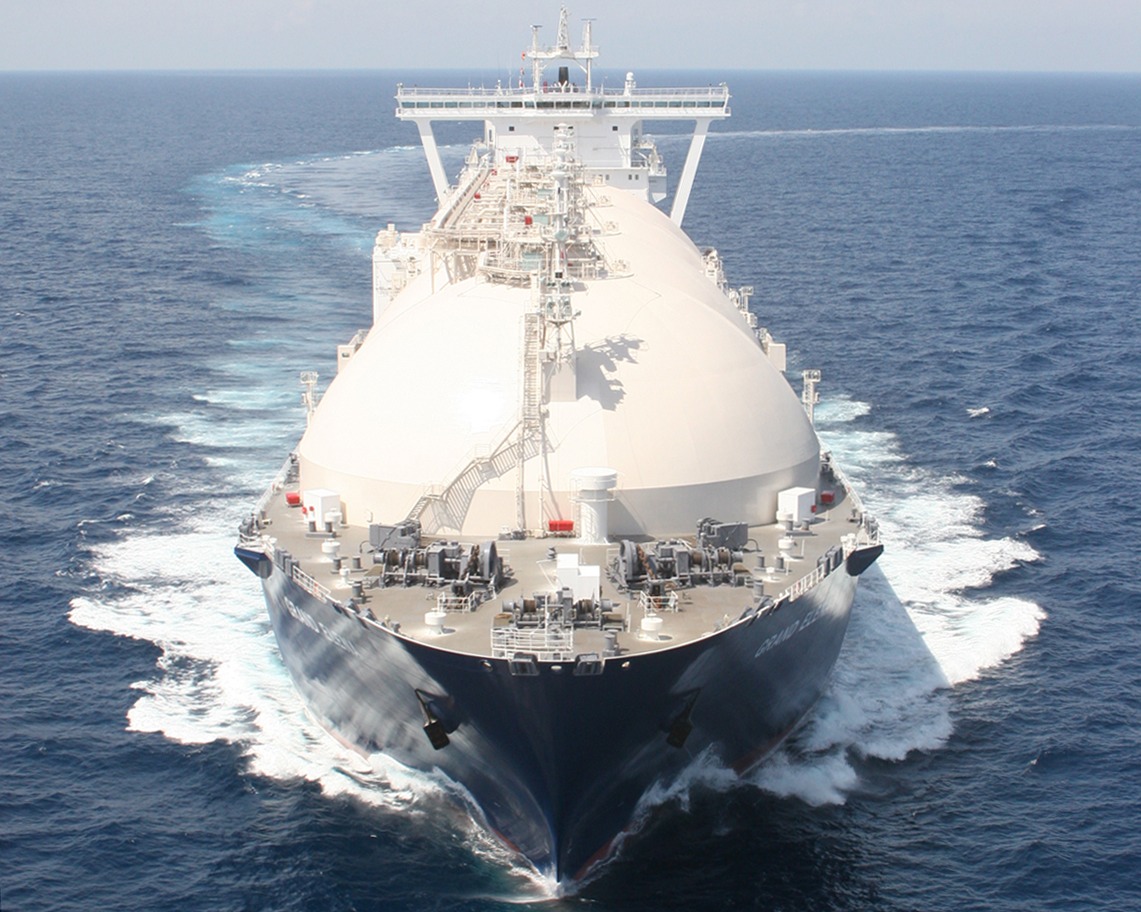


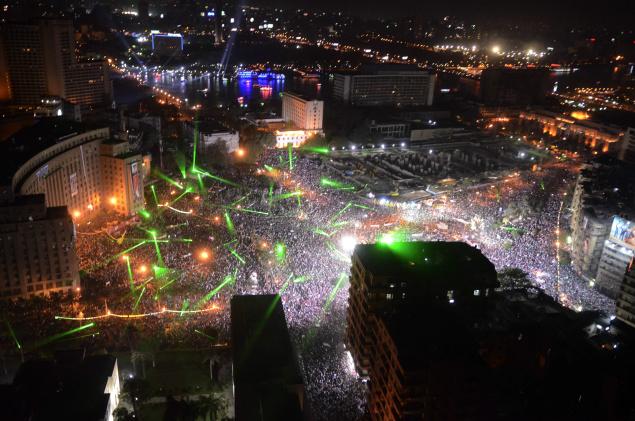
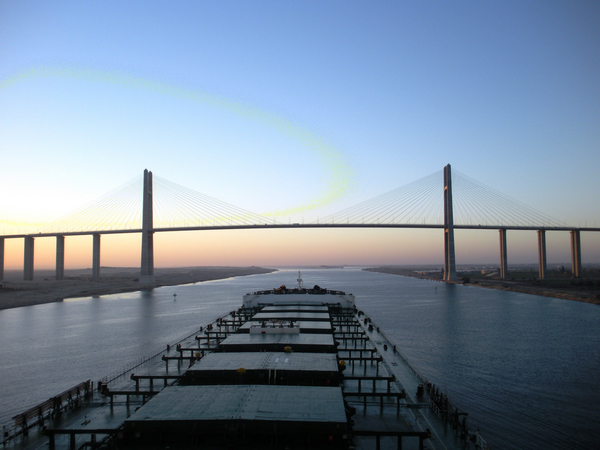
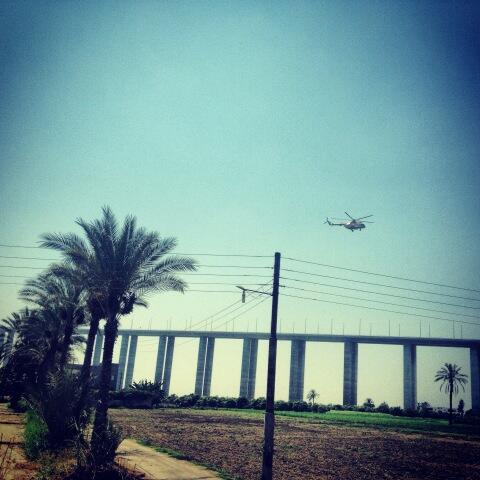
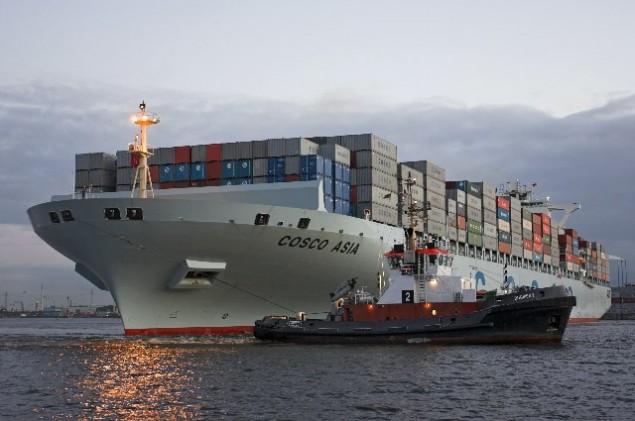
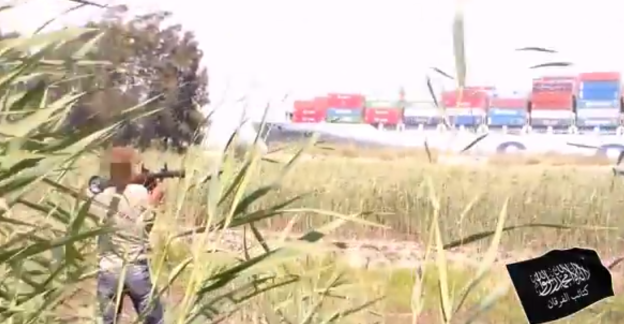
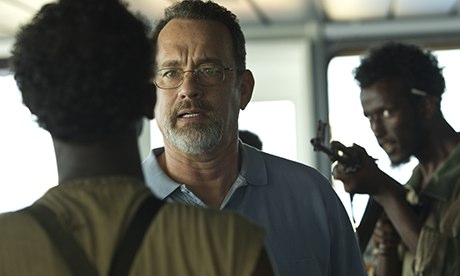
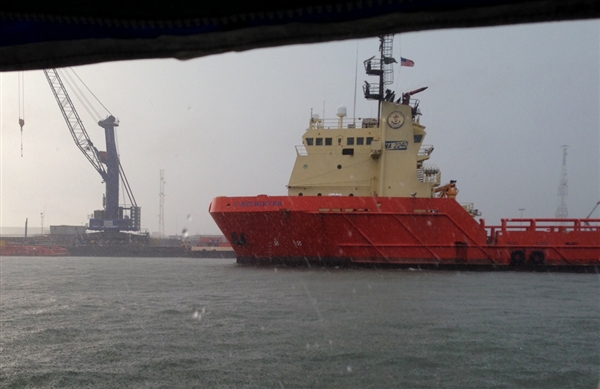
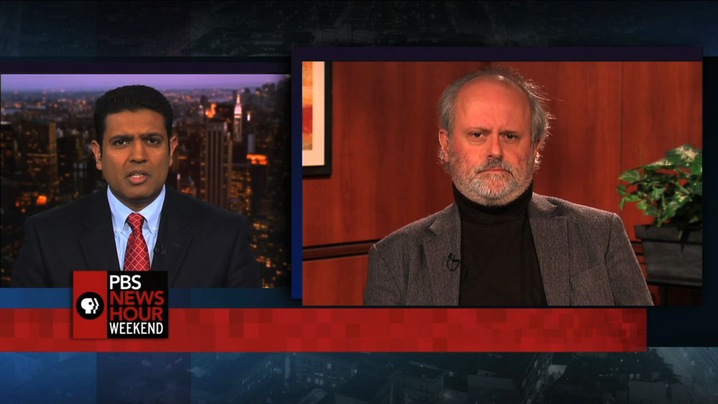
[ Above PBS NEWS HOUR WEEKEND video about "What does piracy off Nigeria mean for global business?" can be played by clicking here. ]
Select public statements in person, the printed press and on radio & TV
NATIONAL DEFENSE - "Hijacked Super Tanker Exposes Vulnerability of Energy Supplies" - March 2009
Column as submitted to National Defense published in full by Yale Global Online:
YALE GLOBAL - "Hijacked Supertanker Underlines Our Energy Vulnerability" - March 2009
ROTOR & WING - "High Sea Piracy: Crisis in Aden"- June 1, 2009
AMERICAN SHIPPER - "Piracy Insurance Poised to Increase" - October 2009
Not available online to non-AS members - please contact us about getting a PDF copy.
NATIONAL DEFENSE - "Somali Piracy Tactics Evolve; Threats Could Expand Globally" -
April 2010
IDGA 2ND MARITIME PIRACY SUMMIT, Presentation - "Why the latest BMPs, as well as
armed guards & citadels, although effective, aren't being adopted by enough ships, because they
cost too much compared to the real risks involved. Why better anti-piracy tools and solutions are
needed, whereby "better" means more cost-effective, when calculated bottom-up & reflecting per
ship transit real risk exposures." - Washington, DC, September 13, 2010.
LIFE WEEK MAGAZINE (Beijing) - "The Strait of Hormuz: a new battleground against
terrorism?" - December 2010.
Not available online & in Mandarin only - please contact us about getting a copy.
LLOYD'S LIST - "Answer to piracy attack patterns is blowin' in the wind" - January 20,
2011
Not available online to non-LL members - please contact us about getting a PDF copy.
Reprinted on University of Hull Business School Website:
SUPERYACHT NEWS - "Superyachts Could be used by Pirates to Attack Cargo Ships" -
February, 2011
SUPERYACHT BUSINESS - "Pirates to Target Superyacht Crews?" - April 2011
Not available online - please contact us about getting a PDF copy.
IFW - "Friday Focus: How war underwriters keep the world going round" - April 1,
2011
LLOYD'S LIST - "Indian Navy's muscular approach could drive pirates to Malacca" - April 13,
2011
Not available online to non-LL members - please contact us about getting a PDF copy.
Summarized in part on Shiptalk Website:
SHIPTALK - "Shifting Problems" - April 14, 2011
REUTERS - "Piracy spurs India coal buyers to diversify" - April 15, 2011
Available also on Yahoo Indian Finance page:
YAHOO! India Finance - "Piracy spurs India coal buyers to diversify" - April 15, 2011
BUSINESS WEEK - "The Arms Race Against the Pirates" - April 21, 2011
Available also on Yahoo main news page:
YAHOO! News - "The Arms Race Against the Pirates" - April 21, 2011
AGENCE FRANCE PRESSE - "Tension escalates as navies, pirates take off gloves " - May 1,
2011
Philippines Inquirer (above) ran full text - AFP story available also (edited) on Taipei Times print edition:
TAIPEI TIMES - "Tension as navies, pirates take off gloves " - May 2, 2011
AFP story available also (edited) in French here, here and here:
L'ESSENTIEL ONLINE - "Escalade de la violence au large de la Somalie" - 5 mai 2011
DJIBTALK.COM - "Escalade de la violence au large de la Somalie" - 5 mai 2011
BUSINESSWEEK - "From Capture to Payment in 12 Steps" - May 12, 2011
AMERICAN SHIPPER - "IMO creates standards for armed guards at sea" - 26 May
2011
REUTERS - "ANALYSIS-Vital shipping lanes can weather turmoil in Yemen" - June 3,
2011
Available also on Yahoo:
YAHOO! NEWS - "Analysis: Vital shipping lanes can weather turmoil in Yemen" - June 3, 2011
INTERNATIONAL TRANSPORTWORKERS FEDERATION - SEAFARERS SECTION 2011
Meeting, Presentation - "The Growing & Evolving Somali Pirate Threat: Where it came from,
where it is today, where it's going; What can be done to slow it, stop it & turn it around; How
you can make yourself safer meanwhile" - Buenos Aires, Argentina, June 13, 2011.
Needs free online registration for those who aren't already American Shipper subscribers.
IFW 40th Birthday Supplement / "Piracy" by Dr Risto Talas - June 30, 2011
REUTERS - "Exclusive - Somali Pirates Use Yemen Island as Fuel Base" - July 5,
2011
Available also on New York Times & Yahoo:
NEW YORK TIMES - "Exclusive - Somali Pirates Use Yemen Island as Fuel Base" - July 5, 2011
YAHOO! NEWS - "Exclusive - Somali Pirates Use Yemen Island as Fuel Base" - July 5, 2011
RADIO FRANCE INTERNATIONALE, interview in English - "Role of Socotra as forward
logistical base in Somali piracy business model" - Paris, France, July 7, 2011.
No longer available online - please contact us about getting a copy of the WMV file.
REUTERS UK - "Piracy ransom cash ends up with Somali militants" - July 6, 2011
REUTERS AFRICA - "Piracy ransom cash ends up with Somali militants" - July 6, 2011
Available also on Business Insurance & Somali Diaspora News:
BUSINESS INSURANCE - "Piracy ransom cash ends up with Somali militants" - July 6, 2011
SOMALI DIASPORA NEWS - "Piracy ransom cash ends up with Somali militants" - July 6, 2011
UK SAIL WORLD - "Somali pirates - why do they prey on cruising yachts?" - July 13,
2011
RADIO FRANCE INTERNATIONALE, interview in English - "Hijacking off Benin of an
Italian tanker - how Somali piracy can inspire at distance" - Paris, France, July 26, 2011.
No longer available online - please contact us about getting a copy of the WMV file.
REUTERS - "Somali pirate ransoms skirt U.S. directives" - August 8, 2011
REUTERS AFRICA - "Somali pirate ransoms skirt U.S. directives" - August 8, 2011
REUTERS UK - "Ship insurers add Benin to risk list after attacks" - August 8, 2011
REUTERS AFRICA - "Ship insurers add Benin to risk list after attacks" - August 8, 2011
SUPERYACHT NEWS - "Yacht Attacked by Pirates and Crew Snatched " - September 10,
2011
IFW - "IMO calls for states to 'facilitate' passage of ships with armed guards" - September 19,
2011
REUTERS - "W.Africa pirates adapt after Nigeria crackdown" - September 21, 2011
FINANCIAL TIMES OF LONDON - "Yemen's descent into chaos fuels piracy fears" -
September 26, 2011
SINGAPORE MARITIME OFFICERS UNION 2011 Manning Conference, Presentation -
"Protecting Seafarers from the Piracy Scourge" - Singapore, September 30, 2011.
HONG KONG SHIPOWNERS ASSOCIATION Seminar, Presentation - "A Multi-Layered
Approach to Piracy" - Hong Kong, October 3, 2011.
RADIO FRANCE INTERNATIONALE, interview in English - "Kidnaping of French woman
from Kenyan luxury resort: context & implications" - Paris, France, October 4, 2011.
No longer available online - please contact us about getting a copy of the WMV file.
LLOYD'S LIST - "Where will pirates go next?" - October 12, 2011
AGENCE FRANCE-PRESSE - "Kenya at high risk of more kidnappings" - October 15,
2011.
MARITIME ACCIDENT ATTORNEY - "Piracy victims and PTSD: the untold story" -
November 19, 2011
LA GAZZETTA DEL MEZZOGIORNO - "Indagine viziata da bugie e superficialita" - February
21, 2012
LA STAMPA - "Il caso dei pescatori ucisi" - February 21, 2012
MARINE MONEY ASIA 2012 Meeting, Presentation - "How growing direct & indirect costs of
a hijacking can harm even shipowners or shippers with good fundamentals - and their bankers.
Or why 2012 won't be 2009 - if only because cash reserves are gone" - Hong Kong, February 28,
2012.
SHIPPING WEEK HONG KONG 2012 Meeting, Presentation - "Crisis Management and the
growing & under reported threat from piracy" - Hong Kong, February 28, 2012.
SHIPPING WEEK HONG KONG 2012 Meeting, Panel Discussion - "Piracy - cost and
solutions. A geopolitical discussion on options for a solution to the piracy problem. International
government intervention - or armed guards? What is the true cost to the industry? Criminal
immunity for guards on ships, crew on escorts?" - Hong Kong, February 29, 2012.
LLOYD'S LIST - "Piracy study notes at least three patterns behind attacks" - April 4,
2012
SOUTH CHINA MORNING POST - "China's insurers see chance in trade shunned by West" - April 19, 2012
BLOOMBERG - "Shooting to Kill Pirates Risks Blackwater Moment on High Seas " - May 8,
2012
COWES YACHTING - "Superyachts to Carry Guns in Bid to Combat Pirates" - Summer 2012
BLOOMBERG - "Somali Pirates Battled in London as Banks Curb Dollar Supply" - June 22,
2012
LLOYD'S LIST - "Shooting reignites debate over rules on use of force" - July 24, 2012
LLOYD'S LIST - "Relatives of Albedo 15 plead for help to raise money for ransom" - August 8,
2012
LLOYD'S LIST - "Ocean Atlas detention highlights need to regulate PMSCs" -
September 11, 2012
LLOYD'S LIST - "Piracy resurgence is possible with cashflow injection" - October 5, 2012
LLOYD'S LIST - "Shift in pirate attacks may require new Listed Area boundaries" - October 10, 2012
LLOYD'S LIST - "IMB chief condemns cover-up of pirates' attempted attacks" -
October 24, 2012
NATIONAL DEFENSE - "Energy Security Starts With Hardening Power Grids" - November, 2012
OCEANUSLive - "Piracy & Robbery At Sea Incidents - October 2012" - November, 2012
LLOYD'S LIST - "Two Southeast Asia hijackings highlight regional piracy threat" - November 2, 2012
NATIONAL DEFENSE - "Piracy: A Threat to Maritime Security and the Global Economy" - December, 2012
BLOOMBERG - "Brother Shot Dead Fishing Tests Armed Guards' Accountability" - November 29, 2012
LLOYD'S LIST - "Nato urged to explain 'soft' approaches by pirates" - December 12, 2012
LLOYD'S LIST - "Super pirates" - December 12, 2012
ONBOARD ONLINE - "Piracy and the Rise of Armed Security" - January 8, 2013
LLOYD'S LIST - "Rules for use of force will be published this month" - January 15,
2013
LLOYD'S LIST - "UK strengthens its ocean security response" - January 28,
2013
LLOYD'S LIST - "Enrica Lexie case moves to Delhi" - January 29, 2013
LLOYD'S LIST - "Enrica Lexie legacy" - January 29, 2013
RADIO FRANCE INTERNATIONALE, interview in English - "Comparing Somali & Nigerian piracy models after hijacking of French-owned tanker off Cote d'Ivoire" - Paris, France, February 5, 2013.
No longer available online - please contact us about getting a copy of the WMV files.
ONBOARDONLINE - "C-LEVEL Maritime Risks Weekly News Summary" - February 12, 2013
BLOOMBERG - "Suez Canal Tanker Traffic Slides in January Amid Strikes, Riots" -
February 18, 2013
LLOYD'S LIST - "Crew kidnapped from service vessel in new West Africa attack" -
February 18, 2013
ONBOARDONLINE - "C-LEVEL Maritime Risks Weekly News Summary" - February 19, 2013
REUTERS - "Nigerian offshore attacks surge as pirates advance" - February 21, 2013
ONBOARDONLINE - "C-LEVEL Maritime Risks Weekly News Summary" - February 25, 2013
US NAVAL INSTITUTE PRESS - "Defense Cuts Could Increase Piracy, Experts Say" - February 26, 2013
LLOYD'S LIST - "Italy refuses to return Enrica Lexie marines to Delhi" - March 12, 2013
REUTERS - "Egypt unrest raises re-routing risk after Suez toll rise" - March 20, 2013
LLOYD'S LIST - "Return of Italian marines to India raises stakes for armed guards" - March 25, 2013
LLOYD'S LIST - "Many new PMSCs will not survive the year" - March 28, 2013
OCEANS BEYOND PIRACY - "Economic Cost of Somali Piracy 2012" - April 9, 2013
LLOYD'S LIST - "Bangladesh-based pirates pose a real threat to shipping" - May 16,
2013
SUPER YACHT NEWS - "Hurricanes and Piracy, You Need Expert Advice on Both" - May 21, 2013
REUTERS - "INSIGHT-Nigerian pirate gangs extend reach off West Africa" - May 29, 2013
LOS ANGELES TIMES - "Suspected pirates face unprecedented trial in U.S. court" - June 1, 2013
REUTERS - "Insight: Murder trial of Italian marines in India navigates murky waters" - June 9, 2013
REUTERS - "Egyptian anger grows over Suez Canal development plan" - June 13, 2013
LLOYD'S LIST - "Egypt looks for more revenue as Suez transits decline" -
June 28, 2013
LLOYD'S LIST - "Foiled port attack strengthens threat to shipping off Yemeni coast" - August 7, 2013
INTERNATIONAL OIL DAILY - "Egypt Boosts Security at Suez Canal, Sumed Pipeline" - August 26, 2013
INTERNATIONAL OIL DAILY -"Suez Canal Attack Raises Security Red Flags" - September 2, 2013
THE NEW YORKER - "How to fight pirates" - September 24, 2013
REUTERS - "Icebergs, insurance hamper top of the world shipping route" - October 15, 2013
LLOYD'S LIST - "Afweyne arrest in Brussels could trigger pirate reprisals" - October 15, 2013
REUTERS - "Pirates kidnap two U.S. sailors off Nigerian coast - sources" - October 24, 2013
GUARDIAN - "Two US citizens kidnapped by pirates off Nigerian coast" - October 24, 2013
AL JAZEERA - "Pirates capture 2 US citizens off Nigerian coast" - October 24, 2013
HUFINGTON POST - "Pirates Kidnap U.S. Sailors Off Nigerian Coast" - October 24, 2013"
THE NIGERIAN VOICE - "Pirates kidnap 2 US citizens off Nigeria's coast" - October 25, 2013
FOX NEWS - "Two Americans taken from Commercial Ship" - October 26, 2013
[ Video not yet available - please check back with us ]
PBS NEWSHOUR - "What does piracy off Nigeria mean for global business?" (YOUTUBE) - October 26, 2013
FOREIGN POLICY - "The Rise and Fall of Somalia's Pirate King" - November 4, 2013
VOICE OF AMERICA / TV2AFRICA - "Africa Piracy" (video) - November 4, 2013
VEJA - "Mesmo fragilizados, piratas ainda ameacam costa da frica" - November 11, 2013
TIME MAGAZINE - "Did 2013 Mark the End of Somali Piracy?" - January 6, 2014
LATEST ONLINE REFERENCES TO MICHAEL FRODL & C-LEVEL
(via Google.com search): CLICK HERE.
LATEST ONLINE REFERENCES TO C-LEVEL MARITIME RISKS
(via Google.com search): CLICK HERE.
SAMPLE WEEKLY REPORTS
C-LEVEL MARITIME RISKS (TM) SUMMARY
C-LEVEL MARITIME RISKS (TM) SUMMARY PLUS
C-LEVEL MARITIME RISKS (TM) WEEKLY EXPRESS NEWS UPDATE

Michael G. Frodl, Esq. can be reached directly by sending an email to "mgfrodl" at the domain name of this website.